- Expedition Yachts
- Expedition Catamarans
- Bering Marine
- Bering Fleet

Bering Yachts Runs a New Adventure with Bering 60 CAT
Pioneering expedition yachts for over 15 years, Bering Yachts is once again charting new waters with the introduction of B60 CAT , an aluminum catamaran designed for both luxurious exploration and comfortable living.
Following the success of their renowned steel trawler yachts, Bering takes a bold step into the world of catamarans, catering to the growing demand for stable, practical, and stylish vessels. This exciting expansion allows customers to embrace the latest trends while staying true to their adventurous spirit.
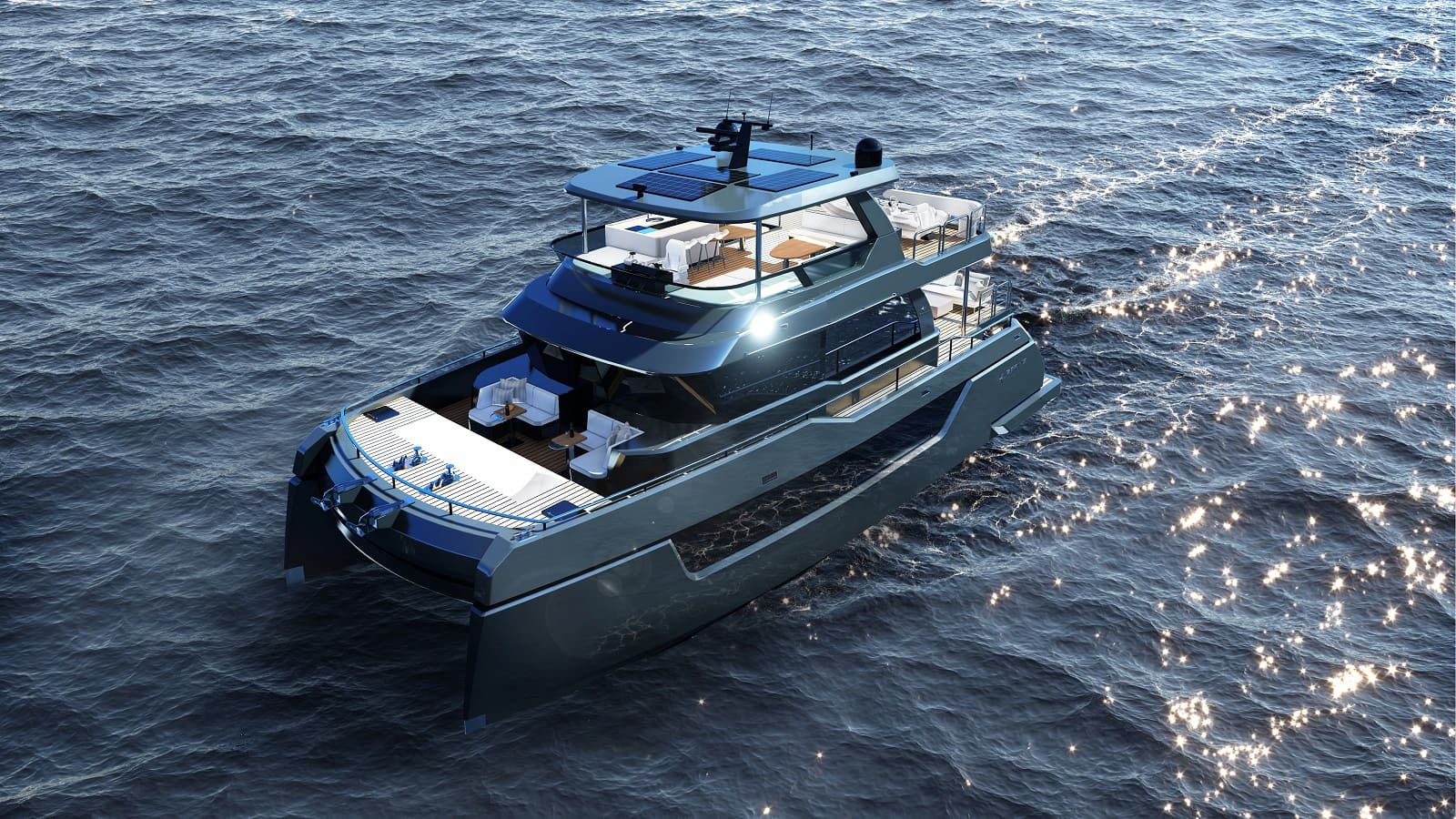
Combining the best of both worlds, B60 CAT offers:
- Unmatched Stability: The inherent stability of a catamaran design is further enhanced by Bering’s meticulous craftsmanship and commitment to safety. Explore remote destinations with confidence, knowing your vessel can handle any condition.
- Luxurious Comfort: Step inside and discover a haven of sophistication. From the spacious saloon with panoramic windows to the multiple decks offering ample relaxation areas, B60 CAT is designed for comfortable living, making every journey an unforgettable experience.
- Unwavering Innovation: Bering’s legacy of innovation shines through in B60 CAT. The flexible layout allows for customization with 4, 5, or even 6 staterooms, an open or enclosed flybridge, and dedicated zones for privacy. Additionally, the 10.5 square meter rising platform and spacious storage areas cater to your adventurous spirit.
- Impressive Performance: Equipped with twin Cummins QSB 6.7 engines, B60 CAT effortlessly cruises at 12-13 knots, reaching speeds of up to 15 knots. With a range of 3,000 nautical miles, explore farther and wider without worrying about fuel stops.

Bering 60 CAT is more than just a new vessel; it’s a testament to Bering’s commitment to pushing boundaries and exceeding expectations. This innovative catamaran is poised to become a leader in its class, attracting discerning explorers who seek the perfect blend of stability, luxury, and performance.
Ready to embark on your next adventure? Contact Bering Yachts today to learn more about B60 CAT .
Buy to charter

Professional BoatBuilder Magazine
An aluminum expedition catamaran.
By Dieter Loibner , Apr 5, 2022
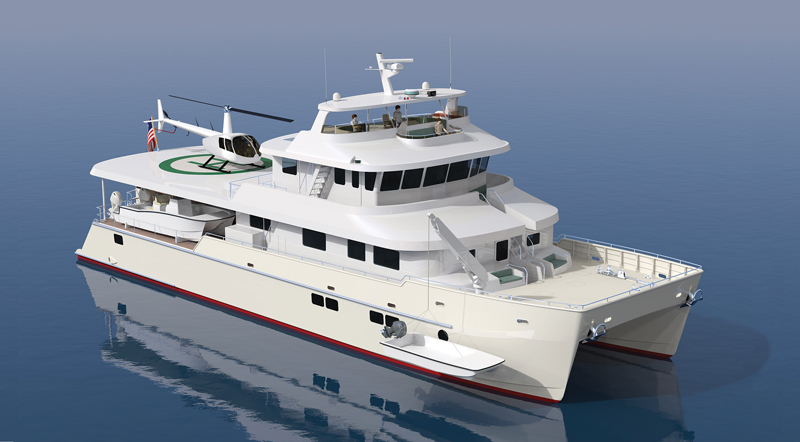
With 110′ LOA, a 35′ beam, and 45′ (33.5m, 10.6m, and 13.7m) of bridge clearance, the H-2 catamaran seeks to make a case for U.S. custom boatbuilding.
Hauling toys beyond the horizon is the raison d’être for a rugged go-anywhere catamaran designed and built in the U.S., a notable exception in the world of big yacht projects.
Gunboat might have left town, but there’s another big catamaran under construction in its old facility in Wanchese, North Carolina. It’s called H-2 , short for Hippocampus 2 , a stout 110-footer (33.5m) that liberally and intentionally quotes from the expedition/workboat vernacular. It’s built from aluminum and was conceived to go to the back of the beyond, where adventure beckons and Vessel Assist doesn’t operate. Aside from commodious and cushy accommodations, the boat offers grid autonomy, ocean-crossing range, and cargo capacity to match the mission of hauling a 26 ‘ (7.92m) tender, a 17 ‘ (5.8m) skiff, a two-person submarine, a four-seat ATV on the main deck, and a small helicopter on the flight deck aft.
The boat was commissioned by Brian Schmitt, 67, a real estate executive in the Florida Keys, who pilots his own plane to commute to the Bahamas, where he keeps Hippocampus , his current 57 ‘ (17.37m) cold-molded wood/epoxy catamaran. I asked him about the jump from 57 ‘ to 110 ‘ . “I never thought I’d have the ability to do that in my own boat until probably the last few years,” he replied, adding that “it would be 120 ‘ [36.58m] if I had to do it today.”
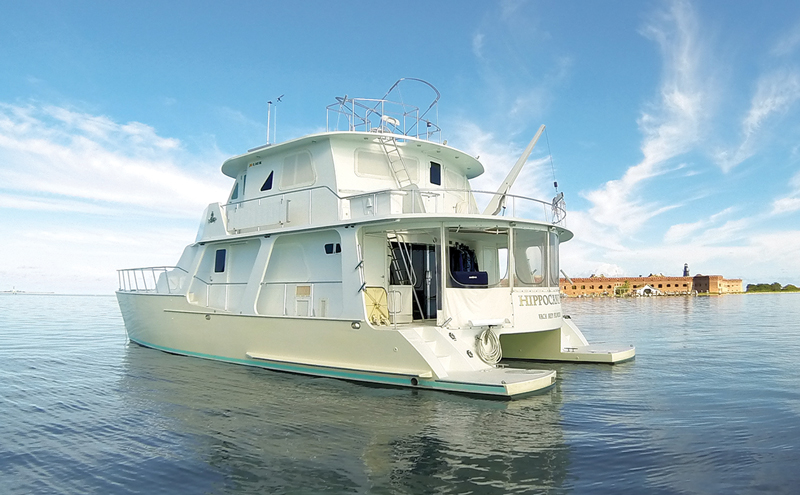
Its predecessor, Hippocampus, built in wood/epoxy, was launched in 2003. At 57′ (17.37m), it is about half as long as H-2, but with 22,500 miles under its keels, it was a useful starting point for designing the new vessel.
Wearing shorts and a shirt with the new boat’s name and logo to our meeting, Schmitt talked openly about his project, which he manages as attentively as his real estate brokerage with 130 agents. Communication is his thing, responding to e-mail questions in near real time (in ALL CAPS) and talking to contractors directly. No project manager.
A passionate diver who habitually explores remote and exotic locales, Schmitt said he was happy with the first Hippocampus , which has three staterooms and cruises at 15 knots on twin 370-hp Yanmars. “It was the vehicle that got our 17 ‘ tender wherever we needed it.” But running the little boat 60 or 70 miles a day lost its charm. “One of the things I wanted was a twin-engine tender that would have more room for dive gear. That ended up being a 26 ‘ Calcutta, so I needed a bigger mother ship.”
With accelerating climate change, the carbon footprint of ships and large yachts is under scrutiny, but hydrocarbons still win when speed, range, and payloads are priorities. While H-2 doesn’t break the mold there, Schmitt pointed to the project’s virtues as a U.S. domestic build. “You can’t complain about global warming when you’re flying around in your G500 jet that’s contributing more CO2 emissions than anybody else in the world,” he said. “You can’t complain about all the boats being built in Germany, The Netherlands, and Italy, and then go buy a boat [there].” Schmidt wanted to build locally, keeping jobs and money in the U.S. Besides, he noted, this approach simplified communications and enabled him to personally check on progress during COVID. Perhaps most importantly, he could pick a team of trusted and compatible mates to turn his dream into a boat.

The vast build hall left vacant when Gunboat left Wanchese, North Carolina.
He selected John Marples, a fellow pilot, inventor, and multihull specialist for the design and Felix Herrin to build H-2 . Both men had worked for him on Hippocampus , and their familiarity helped when meeting today’s challenges, such as damaging trade tariffs that drove up aluminum prices, and a pandemic that killed millions, wreaked havoc on global supply chains, and caused labor shortages in industrial sectors. These factors have conspired to delay H-2 ’s launching by roughly two years and counting.
Advantage Aluminum
A key decision early on was to build in aluminum, which promised a robust structure but required extra steps to deal with corrosion and noise mitigation. “Construction was reduced to something simple—a V-bottom deadrise model, stretched out,” Marples explained. “There wasn’t any benefit to round bilges on an aluminum boat. You’d have to add internal structure to support the flat panels, and it drives the cost and difficulty of construction way up. We’re talking about a speed-to-length ratio of 2 or less, which is not a big deal. His current boat would do a speed/length of about 3, so the extra length means that you’re never really pushing the boat that hard, so shape was not a huge consideration.”
Marples and Herrin go back at least three decades to their mutual acquaintance with naval architect and boatbuilder Dave Dana, who assisted Marples with the hull design for Admiral Pete , a catamaran passenger ferry still serving Puget Sound. Herrin works with different construction materials, but having built crew boats for Petróleos de Venezuela (PDVSA) at Sea Force in Palmetto, Florida, he has spent considerable time with aluminum.

Taking a break during IBEX 2021 are builder Felix Herrin (left) and owner Brian Schmitt. H-2 is their second joint project with designer John Marples.
The structural components on H-2 are 5083-H32 alloy aluminum plate and extrusions of 6061-T6 alloy. Scantlings, materials, and weldment comply with the American Bureau of Shipping’s (ABS) 2016 design guidelines for pleasure motoryachts. Hulls and wing structures have transverse frames and bulkheads spaced on 36 “ (0.91m) centers. Those frames are supported by substantial centerline vertical keels (CVKs) welded atop twin 3 “ x 8 “ (76mm x 203mm) solid extruded-aluminum-bar keels. Intermediate subframes in the forward and aftermost hull compartments strengthen the hulls for operating in ice. Schmitt indicated he wants to traverse the Northwest Passage. For the same reason, there’s 3⁄8 “ (10mm) plate running the length of the boat above and below the waterline.
The topside and underwing plating is primarily ¼ “ (6mm), with areas of 5⁄16 “ (8mm) to strengthen slamming zones in the bow. The main deck plating is also 1/4 “ while the foredeck plate is specified at 5⁄16 “ . The bottom plating is 5⁄16 “ in the aft two-thirds of the hull and 3⁄8 “ forward. “We built all the frames and bulkheads first, then scarfed together the keel sections [and] lined those up on the bunks that we built on,” Herrin explained. “We welded the CVK on top of the keel, then started installing frames.”

Hulls and wing structure have transverse frames and bulkheads on 36″ (0.91m) centers. The hulls are supported by centerline vertical keels.
Herrin said he changed aluminum suppliers midway through the project, sourcing from Bayou Metal Supply , an ISO 9001:2015–certified distributor in Slidell, Louisiana. “We sourced the material from Greece and from domestic suppliers,” said Taylor Smith, who handles Bayou’s sales. Tariffs, he said, did not slow down business much, but the aluminum cost more. “Felix sent cut files. We had the material in inventory, we cut it, processed it on a router, and shipped it on time. Everything flowed well.”
Naval and structural engineering and detailing was contracted out to Van Gorkom Yacht Design in Portsmouth, Rhode Island. “My first responsibility was looking at structures,” Geoff Van Gorkom said. “Given that this is an aluminum yacht, we can do literally all the structures in 3D and have all the metalwork precut before it came into the yard. All the frames and longitudinals and all the primary structure were precut, which saved huge amounts of time.” Van Gorkom said he uses Rhino 3D and some of the numerous modules such as Orca 3D for hydrostatics and hydrodynamics, and 2D AutoCAD to produce construction details.

Helping save time and money, 3D-modeling allowed frames, longitudinals, and the primary structure to be cut before being sent to the building site.
Van Gorkom observed that H-2 is not a fussy high-performance vessel that needs minimum weight to achieve maximum speed. Besides ABS guidelines that address torsional loads in catamaran structures, he also consulted A.L. Dinsenbacher’s paper “A Method for Estimating Loads on Catamaran Cross-Structure” ( Marine Technology , Vol. 7, No. 4, October 1970) to estimate load conditions in beam and quartering seas. “This is going to be a very stiff boat. It’s going to be a very strong boat simply because it has to be, and that was one of the criteria that Brian put out there right from the very start of the project. The boat is sturdy and stout, a strong expedition yacht.”
Van Gorkom also engineered the setup for a folding deck crane housed under a flush hatch in the helideck on the port side to launch and retrieve the two-man submarine or the ATV. “It’s basically an enclosure that opens up, so the crane extends out,” he explained. “It comes up on a telescoping pipe to swing out and pick up something from the side of the boat.” It required support from beams on each side of the crane and cutting a slot in the helideck for the lifting bridle so the loads can move inboard or outboard. On the starboard side, the 5,500-lb (2,492-kg) Calcutta tender is an even heavier load moved by twin overhead beam cranes. The 17 ‘ Twin Vee is launched and retrieved from the foredeck with a 2,500-lb-capacity (1,153-kg) crane.
Catamarans are known to be weight-sensitive, so how will H-2 handle the weight of all the toys and high superstructure? The arch over the flybridge is 33 ‘ (10.05m) above waterline, Van Gorkom confirmed. “Add another 10 ‘ [3.05m] for the radar, mast, etc., so a comfortable bridge clearance would be around 45 ‘ [13.7m].” Marples conferred with Van Gorkom about the effect of the added weight on the center of gravity, which was deemed “almost imperceptible,” Marples remembered. A quick calculation suggests that a 5,500-lb deck load is equal to only 1.57% of a full-load displacement given as 350,000 lbs (158,550 kg).
High Power, Low Noise
Van Gorkom hired engineers at HydroComp to evaluate the design’s hydrodynamics and propulsion systems, including the influence of hull-shape parameters and demi-hull spacing on resistance. HydroComp also offered a speed-power prediction to aid with engine selection and recommended optimum shaft rpm and propeller parameters. Technical director Donald MacPherson, who prepared the report, outlined the process and findings: “Particularly interesting for this project was the use of its novel analytical distributed volume method [ADVM] for the vessel’s resistance modeling. This 2D technique (between parametric methods and CFD) uniquely allows for assessment of the influence of local sectional area curve regions (such as ‘shoulders’ or inflections) in wave-making drag. It also directly evaluates the effects of catamaran hull spacing.” HydroComp helped optimize the hulls by identifying the regions that contribute most to wave-making drag, and securing a 3% reduction in total drag at the design speed by making what MacPherson called “very minor changes to the immersed volume distribution.”

Rob Ayers works on the installation of the starboard engine’s Evolution Marine Shaft System that will be fitted with a 36″ (0.91m) five-blade propeller.
That simulation was mapped to benchmark performances of four similar catamarans, and the process was run for two design variants, followed by a propulsion simulation for partial-load conditions. The hull-spacing study concluded that the originally designed 35 ‘ (10.7m) beam remained suitable despite the boat being 20 ‘ (6.1m) longer than originally drawn. The chosen propulsion system comprises two MTU 10V 2000 M96, 1505-mhp diesels with ZF 3000 flange-mounted marine gears, providing an estimated top-speed range of 20–22 knots, cruising speeds of 12–15 knots, and 10–13 knots for long-range voyaging. Actual performance will be established during sea trials.
The recommended propeller specifications developed by HydroComp were for five-blade models with 36 “ diameters. HydroComp applied PropElements, a wake-adapted propeller-analysis tool, to determine the advisability of installing a nozzle or shroud to restrict transmission of pressure pulses to the hull and to create a more uniform inflow. This would reduce interior noise but would increase appendage drag and power demand. Schmitt said he will wait to see if cavitation or prop noise is an issue before making a final decision.
He invested heavily in noise and vibration mitigation, knowing that an aluminum boat won’t provide the natural sound-dampening of a wood/epoxy structure like that of his first Hippocampus . Consulting with Soundown of Salem, Massachusetts, Schmitt wanted to replicate what worked well on his old boat, starting with the Evolution Marine Shaft System, in which the prop shaft runs in an oil-filled tube and uses roller and needle bearings instead of standard water-lubricated bearings. “You have a lot less shaft noise, but one of the primary benefits of an integral thrust bearing is that it transmits all the thrust directly into the hull, as opposed to pushing on the gearbox or the engine and gearbox combination,” said Sam Smullin, Soundown’s marketing and quality assurance manager. “It allows for a much softer engine mounting, so you reduce the noise from the shaft itself and get a much quieter engine installation, which reduces structure-borne noise.” Because of the relative weight sensitivity of catamarans, Smullin said, “it’s particularly important to do a really good job on the driveline.” His father, Joseph Smullin, president of Soundown and J&A Enterprises Inc., an engineering firm for noise and vibration control, estimated that this could reduce driveline noise levels by 5 dBA to 10 dBA compared to a conventional system.

Clemente Perez, one of Herrin’s build crew, works on the interior. The extensive sound and thermal insulation includes foam sprayed into the cavities.
Soundown also looked at the two 38-kW Northern Lights gensets, which have double-isolation mounts to reduce structure-borne noise. The firm also recommended structural changes to ensure that the mount foundations were as stiff as possible.
Energy from propulsion or generator engines invariably transmits to the boat structure and then resonates through big, flat panels like bulkheads, decks, ceilings, and liners, causing the familiar vibrating rattle. To dampen those vibrations, Herrin said he used Roxul, a lightweight, semi-rigid stone-wool insulation for fire resistance and sound control. His crew also sprayed cavities with Dow Froth-Pak, a quick-cure polyurethane foam for thermal insulation, and installed Sylomer (a microcellular PUR-elastomer) between the structural components and the floors, walls, and panels. “We glued the Sylomer, which is kind of a spongy foam, to the structure of the boat, and then the plywood of the subfloors and walls are glued to that,” Herrin explained, adding that this created a floating interior without any fasteners.
The plywood, called QuietCore, is a composite sandwich panel comprising marine plywood skins and an acoustic damping layer that converts acoustic energy into small amounts of heat that are dissipated. Soundown claims that an 18mm (0.7 “ ) QuietCore bulkhead can reduce noise transmission by up to 10 dBA, an audible reduction 50% greater than with regular marine plywood of equal thickness.
Electricity for a Small Town
Going off grid on H-2 does not mean anyone will suffer, as long as the electrical system keeps powering the boat’s myriad house loads—hydraulic Maxwell windlasses and thrusters; a Webasto air-conditioning system; two full-size stand-up freezers, two refrigerator freezers, and two under-counter refrigerators in the galley, all by Vitfrigo; Krüshr compactors for recyclables and garbage; Headhunter sewage-treatment system; Alfa Laval fuel-polishing system; two FCI watermakers; a complete set of Garmin navigation electronics with full redundancy; and a Böning vessel control and monitoring system.
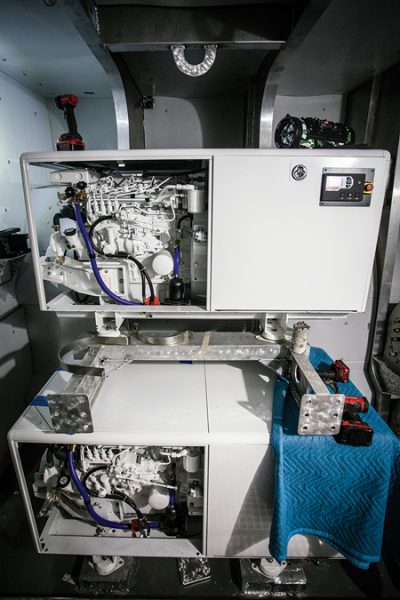
Two Northern Lights 38-kW gensets are the heart of H-2’s AC system, which also includes a 37-kW Atlas inverter to connect to shore power in foreign ports.
Much of the AC side was designed and specified by Ward’s Marine Electric in Fort Lauderdale, Florida, in cooperation with OceanPlanet Energy of Woolwich, Maine, and principal Bruce Schwab, who helped design and integrate the DC components. “Today there’s a big trend in the industry to use shore-power converters as inverters and superlarge lithium-ion battery banks to provide power, at least temporary power, for major loads like air-conditioning, chiller plants, and things like that,” said Ward Eshleman, chairman of Ward’s Marine Electric. “So, rather than using only smaller inverters and synchronizing them and stacking to get additional kW, the trend for the larger vessels is to use shore-power converters as inverters. There is an inverter bus in the main switchboard.”
True to its go-anywhere mission, H-2 was fitted with an Atlas 37-kW inverter to connect to shore power in places that do not serve 60 Hz, 240V single-phase power. “We can take anything from 90V to 400V and pretty much anything from below 50 Hz to the 60 Hz and single- or three-phase,” Herrin explained.
Eight GTX24V315A-F24 lithium-ion batteries from Lithionics are split between a house bank that can run all DC loads for at least 24 hours, and an emergency bank to operate critical DC loads—display screens, radios, nav lights—for 24 hours. The boat is equipped with 10 Solara Ultra-S 160W panels paralleled in two groups of five each, connected to two Victron SmartSolar MPPT 100/50 solar controllers to charge the house bank. Given enough sunshine, solar and battery power should be “capable of running lights and refrigeration but not air-conditioning or heating,” Schmitt said. “Since we will likely spend most of our time in the tropics, we did not believe that solar power alone could do the job we needed.”
OceanPlanet Energy specified four Victron Buck-Boost DC-DC converters, two for each engine, to help charge the house bank from the starter batteries without having to modify the engines’ stock alternators, which would have voided the warranty. “The converters activate based on the input voltage from the starting batteries,” Schwab explained. “With lower rpm, the alternators would not produce enough current to feed both converters without the starting-battery voltage dropping, turning the converters off. Then the voltage will rise, the converters turn on again, drop the voltage, turn off…over and over. Staggering the input voltage cut-in, hopefully starting the converters one at a time, will more smoothly supply power to the house bank across the engine/alternator rpm range.”

OceanPlanet Energy specified the DC system including DC/DC converters and hefty battery banks to power house loads and critical electronics.
There are two 4,500-watt 240V split-phase engineroom-ventilation fans connected to two Victron Quattro 5-kW 24V inverter-chargers configured for 240V/120V split-phase AC loads. They can accept AC inputs from two sources (shore power or generators) and automatically connect to the available source. “In the event of a grid failure or power disconnect, they take over the supply to the connected AC loads by inverting from the Lithionics house-battery bank,” Schwab said.
“It’s more complicated than that,” according to Herrin. “Typically, we’re going to be operating with the A-bus and the B-bus tied together, so we can power everything with one generator. The B-bus actually passes current through the Victron inverter-chargers on its way to the load. We have the ability to split the A-bus and the B-bus and run the A-bus on one generator and the B-bus on the other in the few instances we’re exceeding the capacity of one of the generators. If we lose both generators, then the essential loads are still going to be carried,” meaning engine vents or water pumps.
Redundancy and emergency backups also figured largely in the deliberations of John McKay, manager of the Switchgear Systems Division at Ward’s Marine Electric and point man for this project.
One of his challenges was limiting the voltage drop in the estimated 53 ‘ (16.2m) cable run between engines, which in an emergency allows the starboard engine to be started from the port battery and vice versa. “For a starter group, you can allow a 20% voltage drop,” McKay said and noted that starting the engines requires 720 amps, while the gensets needed only 200 amps. “I was keeping the 720-amp current between 7% and 11% voltage drop, getting up to some pretty good-sized copper. Some sections of the run were 240mm2 [500MCM] cable.” Knowing that the boat is capable of going to high latitudes, McKay recalled his youth and the frigid winter mornings in Massachusetts, “where you can crank a diesel all day long at a low rpm, and it’ll never start. You just need to turn it over one or two times at a higher rpm, and it’ll be running. So, I was making certain that the starter was going to crank at the highest rpm possible and not lose it all to voltage drop.”
Protecting Assets and Finishing the Job
No matter how fast or how far H-2 will travel, corrosion caused by galvanic current between dissimilar metals, by stray currents or by electric fault, is an enemy that needs to be kept in check. That’s the calling of Ted Schwartz, who runs Electro-Guard (Mount Shasta, California). He’s one of the country’s foremost experts on cathodic protection, and also served on ABYC’s E2 Cathodic Protection Project Technical Committee.
“We designed the system and supplied all the equipment and steered them through the installation,” Schwartz said. It’s a 15-amp impressed-current-cathodic-protection (ICCP) system, model 715 A-2, with three anodes and two reference cells. Regarding the boat’s Evolution shaft system with driveshafts running inside an oil-filled tube, Schwartz said: “It was a real challenge because you can’t actually make contact with the propeller shaft on the inside of the boat.” He consulted with Soundown and found a solution. “At the coupling on the inboard end of the tube, a bit of the shaft stuck out through the seal,” Swartz said. “There’s this coupling that Soundown built that fastens to the shaft, and we asked them to provide a surface on that coupling where we could put our silver slip rings on [to provide an electrical connection] to protect props and shafts.”
Every anode can deliver up to 5 amps of current using its own current controller that receives a signal from the main controller, which determines exactly how much current each anode will put out. The entire system consists of three anodes, three current controllers, the main controller, and a separate monitoring station connected to the controller by signal cable. Later, Schmitt also ordered a backup system employing aluminum sacrificial anodes.
On catamarans, the company installs a reference cell aft near the prop of each hull, and an anode on the aft section of each hull, and one anode amidships on the inboard side on one hull.

Chromate, two layers of epoxy, copious amounts of fairing compound, and various primers rendered the surface fair and ready for a yacht-quality paint job.
At the time of this writing, the vessel had been shot with chromate and two layers of epoxy before approximately 500 gal (1,893 l) of fairing compound and 325 gal (1,230 l) of various primers rendered the surface fair and ready for a yacht-quality Alexseal paint job with 35 gal (132.5 l) light ivory, 24 gal (91 gal) stark white, and 2 gal (7.6 l) cordovan gold. Parallel to the exterior, construction was on the home stretch with installation of the crew quarters and the saloon overhead. On the systems side, pressure checks were performed for hydraulics and plumbing.
Since H-2 is a much larger and more complex vessel than the original Hippocampus , with a multitude of systems that need to be managed, monitored, and maintained, I was curious how many crew Schmitt was planning to hire to help run his new boat. He said he consulted with captains and headhunters, and “the consensus is three or possibly four at most. I just completed my 100-Ton Masters and will build time on the new boat as well. We won’t charter and are not accustomed to being cooked for or served or having our beds made and all that. So mostly I’m looking for a qualified captain and engineer to maintain the systems.”
Little surprise that a hands-on operator like Schmitt does not want to cede too much of the game he loves to play. But as big, bold, and broad-shouldered as H-2 will be when she finally emerges from the old Gunboat shed in Wanchese, the proud owner is quick to remind anyone that it’s still “a vehicle to get the toys wherever.”
H-2 : The Designer’s View
H-2 ’s owner, the adventurous Brian Schmitt, has dived into deep caves to see submerged caverns, hand-fed large sharks that would normally view him as food, and spent years in his off-time exploring Caribbean archipelagos in Hippocampus, his current 19-year-old 57 ‘ (17.4m) power catamaran. Nearing retirement age, he gave the order for his “ultimate” yacht.

The foldable hydraulic deck crane to launch and retrieve a two-man electric submarine or an all-terrain vehicle required cutting a slot in the helicopter deck for the lifting bridle.
The first talk about the new design was between the owner, the builder, and me. As we discussed the mission of the boat, it became clear that it would fall into the category of expedition vessel with more guest staterooms, more range, and more room for equipment than his old boat. Brian defined the function of the vessel as a carrier for a 26 ‘ (7.92m) twin-outboard catamaran, an outboard skiff, a small car, and a small helicopter, which needed a flight deck. This vessel was to be used with family and guests while also serving as an operations base for outbound travel by air, land, or sea.
Aside from commodious accommodations, a key requirement was comfortable motion on rough seas. This was to be a catamaran, like his current boat, which offers extensive real estate afloat in a seagoing vessel. The only restriction for the new design was a beam no greater than 35 ‘ (10.6m) to fit the largest Travelift.
The trade-off for overall beam width involves room versus roll motion. A wider catamaran responds more quickly to roll in seaways but with less amplitude, whereas a narrower beam rolls more slowly with slightly more amplitude. The slower roll is preferable as long as overall roll stability is maintained. Roll in catamarans is unlike roll in single-hulled vessels. Because the vessel is supported by two buoyancy chambers (hulls) with distance between them, motion has little to do with roll inertia, but rather with response of the hulls to the seaway. Each hull responds to a passing wave independently by heaving (up/down) and rolling, which is a circular motion around the center of gravity (CG) that translates to lateral motion when standing above the CG, especially high up on the bridge. Power catamarans, unlike sailing catamarans, do not require wide hull spacing to generate righting moment (to support a sail plan), so they can have closer hull spacing, which still preserves sufficient stability, slows wave-response roll characteristics, and takes up less space in port.
One of the expected routes for this vessel is the Northwest Passage over the top of North America. Boats venturing there can expect floating ice, so we added thicker hull plating at the waterline and an ice-separation chamber on the cooling water intakes. We also designed the hull to give the propeller protection by positioning it behind a deep canoe-stern afterbody with no exposed shaft. A rudder horn, below the propeller extending aft from the hull, adds support for the rudder and protection for the prop. This configuration is useful as a hedge against the possibility of grounding. In fact, this boat can be careened on the beach between tides if necessary for repairs. The hull includes a strong, deep, vertical keel structure that allows for blocking anywhere along its length.
Speed and range became the largest determinates of the design. A maximum range of 4,000 miles at 15 knots (enough to cross the Atlantic Ocean) was proposed. Catamarans are easily driven at modest speeds due to lack of significant wave resistance by narrow hulls. A preliminary speed prediction analysis showed that we would be in the ballpark with about 1,400 hp (1,050 kW) and 5,000 gal (18,925 l) of diesel per hull. The final installed fuel capacity is 12,500 gal (47,313 l).

The general arrangement plan shows crew quarters in the hulls, three guest cabins, office, saloon, and galley on the main deck and owner’s suite on the bridge deck level.
A totally new design normally goes through a lengthy proposal and critique cycle between designer and client, especially if the client is knowledgeable and involved. The vessel’s first iteration started at 90 ‘ (27.43m) LOA, but it became evident that it needed more length to relieve a number of ills. After adding 10 ‘ (3.05m) we saw improvements, but it wasn’t until the 110 ‘ (33.5m) length proposal that we felt all the requirements had been satisfied: more slender hull shape, more open interior space, and better placement of machinery and tankage. The flight deck for the helicopter became larger, and the forward superstructure fairings gave the boat a sleeker look. And at 110 ‘ we achieved an efficient length versus waterline beam ratio that reduced wave drag and fuel consumption at the target cruise speed.
While beam remained at 35 ‘ , lightship displacement increased significantly to 230,000 lbs (104,190 kg). Accommodations now include crew quarters for four persons in the bows; three double guest cabins and a ship’s office forward; a large saloon amidships with adjacent galley, and a dive and a storage locker aft on the main deck. The upper deck is arranged with a full-width-bridge steering station forward, protected by a Portuguese bridge, and a master stateroom with en suite bathroom aft. The flight deck extends aft of the master stateroom. Access to the upper deck is by either a staircase from the foredeck, an interior staircase adjacent to the ship’s office, or by stairs from the starboard side deck.
The largest variable weight on the boat is fuel, so the tankage is located amidships to minimize its influence on trim. Engine and machinery rooms aft of the tankage take up the remaining spaces all the way to the transoms. Other amenities include a utility area aft of the crew quarters port side with storage and washing machines, and a walkway through the tank spaces and enginerooms to the boarding decks at each transom. Another late addition is the flying bridge to aid with shallow-water operation by improving the vantage point to see coral heads and other obstructions. Its protective bimini serves as a mounting platform for lights and antennae.
—John R. Marples
Read more Construction , Design , Drawing Board , Yards articles

- Van der Werff’s Curved Wood
A Dutch yard adopts composite panel molding technology to build boats from preshaped wooden hull sections.

- Departures: Carl Chamberlin
Passionate, competent, considerate, modest, and thoughtful is how designer and boatbuilder Carl Chamberlin is remembered by those who knew him. He died last November at age of 75 in Port… Read more »

- SAFE Boats Regains Small-Business Status with Employee Ownership
More than 20 years ago, Professional BoatBuilder ran a feature titled “God, Country and Fast Boats” (No. 85, page 64) about SAFE Boats International (SBI), a Bremerton, Washington–based manufacturer of aluminum boats…. Read more »

Recent Posts
- Find out how 3D printing can help your boatbuilding with MASSIVIT
- SNAME Powerboat Symposium Is Back
- Companies (85)
- Construction (106)
- Design (161)
- Drawing Board (10)
- Education (25)
- Environment (16)
- Events (21)
- Materials (50)
- Obituary (18)
- People/Profiles (49)
- Products (16)
- Propulsion Systems (32)
- Racing (16)
- Repair (37)
- Rovings (317)
- Short Cuts (3)
- Sponsored Partner News (14)
- Systems (80)
- Task Sheet (1)
- Uncategorized (26)
- Wood to Glass (7)
ProBoat.com Archives
Explorer Sailing Yachts
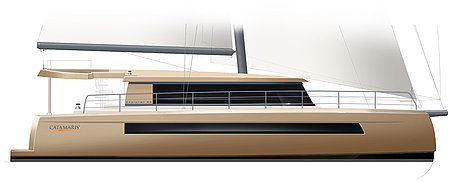
NEW: Catmar Range Explorer 58
The new catmar® range explorer 58 aluminium catamaran for worldwide blue water exploration. timelessly elegant design and a powerful rig with outstanding sailing performance..
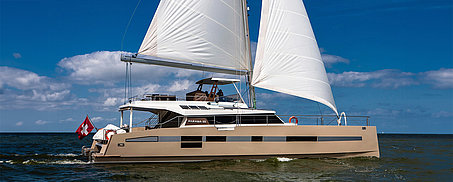
Catmar Explorer 64-ML
A "one-off" design explorer catamaran in certified aluminium for circumnavigation. safe, strong, reliable, robust and fast sailing, made in our shipyard in holland..
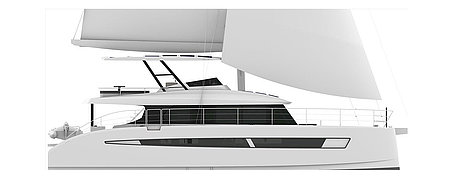
Catmar Explorer 64
An individual seaworthy custom-made explorer catamaran for all oceans. 205 sqm living space, good sailing characteristics, made in our shipyard in holland.
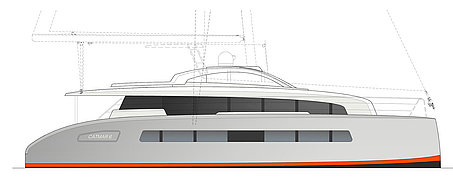
Catmar Explorer 64 Wheelchair
Wheelchair accessible explorer catamaran for worldwide blue water cruising, made in our shipyard in holland. wheelchair access to all decks and cabins, single-handed..
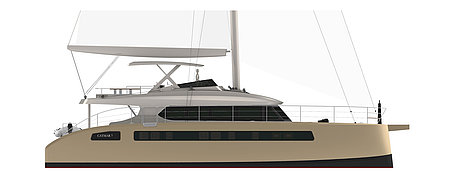
Catmar Explorer 71
Comfortable ocean explorer catamaran for circumnavigation, individual design, made of certified aluminium, good sailing performance, can be viewed currently under construction in holland., sturdy explorer sailing catamarans.
Individually planned sturdy "full-custom" Explorer sailing catamarans cannot be ordered or bought off the shelf of a series production manufacturer.
But one can have them built individually and custom-made:
Have the design and layout developed together with CATAMARIS® and its architects and have them built at one of the experienced Catamaris® shipyards in Holland, Germany and Europe.
About Cookies (Ext:cat)
This website uses cookies. Those have two functions: On the one hand they are providing basic functionality for this website. On the other hand they allow us to improve our content for you by saving and analyzing anonymized user data. You can redraw your consent to using these cookies at any time. Find more information regarding cookies on our Data Protection Declaration and regarding us on the Imprint .
With the help of these cookies we strive to improve our offer for our users. By means of anonymized data of website users we can optimize the user flow. This enables us to improve ads and website content.
These cookies are needed for a smooth operation of our website.
- REQUEST INFO
Our amazing 48 foot sailing catamarans.
Voyages are conducted aboard the award-winning Leopard 4600 catamarans. These elegantly designed and precision built vessels incorporate safety features, large deck space, a roomy cockpit, light and ergonomic galley, and an enormous transom (for easy entry and exit from the water while wearing SCUBA gear), with an advanced sail plan that makes them fast and easy to sail. These vessels offer comfortable accommodations, excellent safety and quality construction. The perfect choice for our trips, the catamarans provide a stable platform that allows us to dive in all conditions and have plenty of room to store our gear. Full equipment is provided aboard for each participant and there is no sharing of SCUBA gear or waiting for your turn to dive. As we dive directly off our yachts, you do not have to wait around for a dive boat to pick you up, allowing you much more adventure.
The 4800 catamarans are true blue-water cruisers featuring a self-stacking mainsail with integral sail cover, roller-furling genoa, and twin 55 hp diesel engines. An electric windlass with handheld remote makes anchoring easy. The raised helm station is at the forward end of the spacious cockpit and above the cockpit’s hardtop roof, providing 360 degrees of visibility. A hardtop bimini shades the helm. The cockpit has walk-through access to the swim platforms, a full electronics package that includes a color chart-plotter and autopilot, stereo/MP3player speakers, a large table, and lots of seating. A wide door opens to the luxurious saloon.
The saloon features a plush U-shaped settee and a large dining table with seating for eight that converts to a double berth. There’s also a HD TV. The galley has all amenities and plenty of counter space. The yacht has four luxurious double and two single staterooms with dressing areas and en suite electric heads and separate shower stalls. There is ample storage space throughout. Numerous opening ports and hatches provide superior ventilation to keep the cabins cool and comfortable. The yacht is equipped with a powerful generator.
- Custom-built by Robertson & Caine
- Length overall 48 Ft. 4 In.
- Waterline Length 46 Ft. 7 In.
- Beam 24 Ft. 10 In.
- Draft 4 Ft. 5 In.
- Displacement 21600 lbs
- Yanmar x 2 55 HP
- Fuel Capacity 185 Gal.
- Water Capacity 211 Gal.
- Sail Area(120% genoa) 1593 Sq. Ft.
- Cellular Phone
- VHF Base and Handhelds
- Autohelm GPS/Autopilot/Wind Indicator
- 110v 600 watt power inverter
- 9cfm SCUBA compressor
- 24 aluminum SCUBA tanks
- 16 complete sets of SCUBA gear including dive computers and lights
- Underwater Ecology Research Equipment
- Underwater Digital Cameras in housings
- GoPro HD Video Camera with underwater housing and external light
- Tablet computer
- Slalom Water-Ski
- Dissecting Scope
- Marine Life Reference Library
- Waterproof hammocks
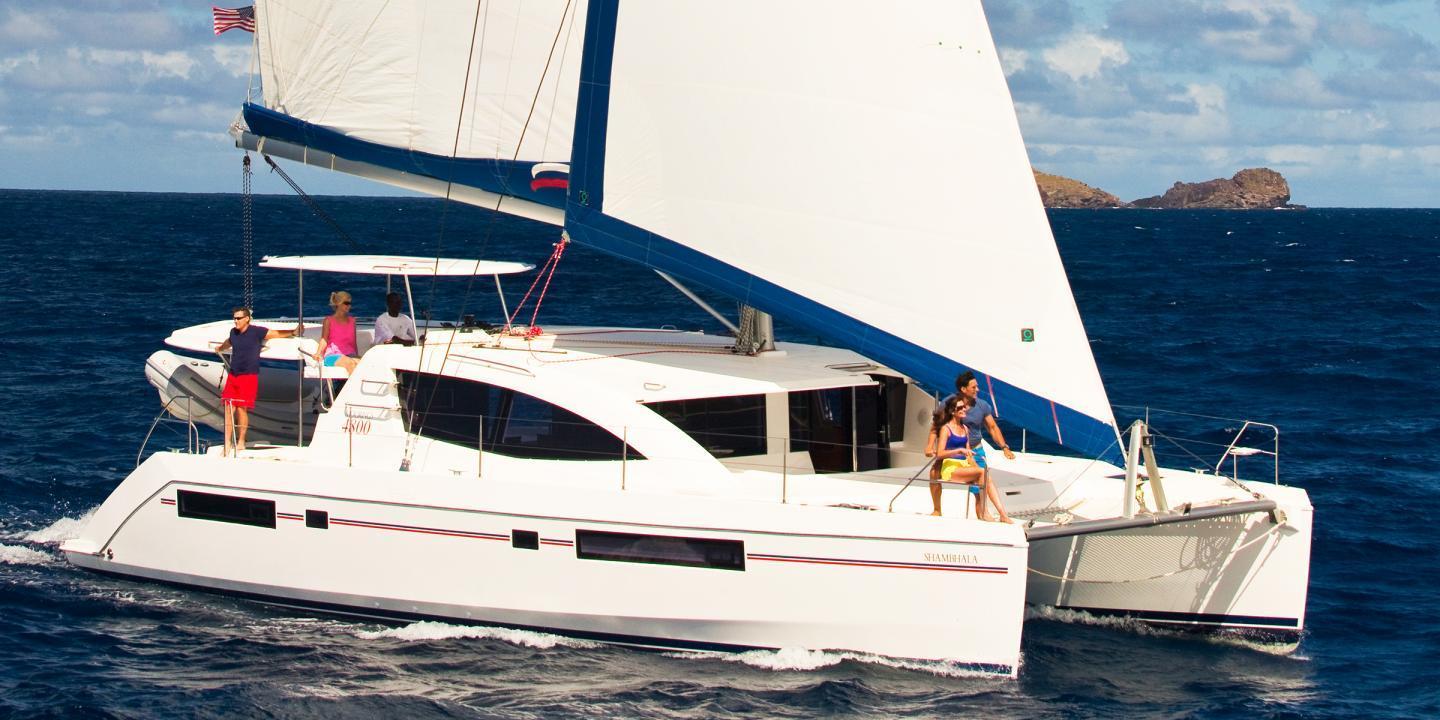
Tropical Marine Biology Voyages
Learn to dive and sail - no experience necessary.
Yachting World
- Digital Edition

The best bluewater multihulls of all time: a complete guide
- Toby Hodges
- October 6, 2021
Toby Hodges and François Tregouet consider the best bluewater multihulls and look at the options for sailing the oceans in spacious comfort

What are the best bluewater multihulls for long term cruising? The one you own, or the one you can afford is the simple answer.
There is a wealth of proven designs to suit bluewater sailing and a variety of budgets. While we have focussed here on the best bluewater multihulls in production, we’ve also included some cracking pedigree multihulls which tour the planet and might occasionally pop up on the brokerage market.
If you can afford to, then pushing towards the 45-50ft length will buy you space, pace and that extra payload capacity needed to take all the items you’d want on your home afloat.
When looking at the best bluewater multihulls, the choice will come down to that perennial balance between comfort/space and speed/weight. Choosing a lighter weight performance design will obviously help you cover distance voyages more rapidly and potentially allow you to outrun weather systems. It means you can sail faster, with less sail up and less load and stress. But you’ll have to sacrifice some luxuries and need to be quite scrupulous about keeping weight down and centralised in order to maintain high average speeds.
For the majority of cruisers, however, it is the amount of space multihulls offer once you’ve reached your destination that really appeals. As well as the non-heeling living area and real estate they provide, they’re well suited to typical tradewind sailing .
If you’re considering your first or next multihull, we hope the following will serve as a taster.
Best bluewater multihulls for performance cruising
Outremer 51/55.
When you think of multihulls designed for bluewater cruising, Outremer will likely be one of the first names that comes to mind. Its heritage lies in building catamarans that can sail fast and are built strong enough to do laps of the globe.
The 51, the current version of which launched three years ago, is an archetypal example of what to look for in terms of blending speed and space is a dream design for a family circumnavigation.
The French yard’s new 55ft VPLP design may look boldly different from its past models, but the philosophy behind it remains the same. It is designed to match windspeed up to 12 knots and Outremer reasons that its ability to sail in 5 knots of breeze will allow it to sail for 95% of the time on a circumnavigation.
Read more about the Outremer 51 and Outremer 55.

Photo: Diego Yriarte
Seawind 1600/1370
For nearly four decades the Australian Seawind brand and its founder Richard Ward have been gearing catamarans around safe bluewater sailing, including performance, protection and ease of handling. Its Reichel Pugh-designed 1600, which launched three years ago, is an elegant looking cat with relatively low, long lines and some smart solutions for fast bluewater sailing.
Seawind also launches its new 1370 later this year, a staggering 60 of which have sold on plans alone.
This first 50 is built from a composite sandwich of basalt fibre, a cloth made from volcanic rock, and PET foam from recycled plastic bottles, which helps to reduce carbon emissions by nearly 50% when compared with traditional glassfibre methods.
This new 50 footer is perhaps a more appealing and practical prospect than Rapido’s previous 60 (with its significant fixed beam), particularly as the amas on this new model can fold to reduce beam to 18ft.
Infused carbon foam sandwich construction is used, along with beams, daggerboards and rudder in pre-preg carbon to keep displacement to 8,200kg.
Read more about the Rapido 50
This OC50 is designed as a more affordable cruising alternative, than the HH models which have preceeded it. This model targets ocean sailing.
It’s still stiffened and strengthened by carbon, but built in vinylester composites with a gelcoat finish. This adds an additional 300kg or so over a full carbon HH50, but cost savings are in the region of $400,000.
Read more about the HH OC50
Balance 526
The 526 launched four years ago, designed to suit short-handed sailors and families looking to sail long distances, hence it can carry large payloads and promises easy maintenance. It looks good too.
Berman’s Versahelm design is a key feature. The wheel cantilevers, allowing the helmsman to steer from outboard with clear sightlines or from the hardtop protection of the aft cockpit.

Photo: Christopher White
Atlantic 47
The A47 suits short-handed fast ocean sailing at an approachable size. Lengthening it to 49ft allowed for an aft cockpit. It is available as a sloop or with White’s patented MastFoil ketch rig – rotating aerofoil masts designed for easy short-handed cruising without sacrificing performance.
Read more about the Atlantic 47
A combination of sharp design from François Perus and high build quality brings plenty of appeal to this sporty Italian-built cat. The first example launched three years ago with a light displacement of 10.5 tonnes, thanks to an E-glass epoxy-infused build with carbon strengthening. The yard offers semi-custom construction and full hybrid packages.
Catana 53/Ocean class 50
Catana’s performance model from 2017, sports twin aft helms (which may not suit ocean sailors), reverse bows and carbon daggerboards. The high topsides help create good bridgedeck clearance and plenty of accommodation. Its new Ocean Class 50 seems more in the shipyard’s bluewater DNA. The light weight, and dynamic and modern shape with slim hulls and a relatively short nacelle suggests a seaworthy nature and high speeds.
Read more about the Catana 53
Best bluewater multihulls for pedigree performance
Veteran multihull designers Morrelli & Melvin designed this smaller model for the Gunboat range. It was built to be more manageable for an owner-driver yet still capable of up to 300-400 mile days.
The Gunboat 48 is something of a rare breed, just six 48s were built between 2004 and 2009. Oh, to have a spare €1.3m right now… one of them is actually on the market.
Read more about the Gunboat 48
At the start of the Millennium, Catana offered fully equipped boats as standard for long distance cruising. The Catana 471 or 472 (one or two helms respectively), represented at the time the optimum in ocean-going catamarans.
Chincogan/Lightwave
Tony Grainger has been drawing fast multihulls for 35 years, including racing trimarans and the Lightwave and Chincogan cruisers. The popular Lightwave 38 has admirable performance and comfort, and the Chincogan 52 (pictured) has the length to clock high average speeds.
Outremer 45 G. Danson
With its characteristic roof, narrow hulls and daggerboards, the Outremer 45 is a standout design which has become somewhat iconic. Despite a rather spartan interior, it has been a great success with fast cruising enthusiasts. On board, family ocean crossings at an average of 10 knots are the norm.
Best bluewater multihulls for family cruising

Photo: Nicolas Claris
The Lagoon 450 remains the most popular model in Lagoons already popular range. It exemplifies the VPLP/Nauta design partnership which has made these the very definition of modern mid-size cruising catamarans which can appeal to families and charterers alike.
Indeed the 450 marked the modern look of Lagoon and was the first with interior styling from Nauta. It originally launched over a decade ago as a flybridge design with central helming position (450F), before this ‘sport top’ option (450S) was offered with a starboard helm station and lower boom.
Read more about the Lagoon 450

Photo: Guilain Grenier
Fountaine Pajot Saona 47
The 47 has a modern shape, with straight bows and a reverse sheer line. It incorporates significant volume in the hulls below the bridgedeck to create room for the optional athwartships cabins. Cabin space is a prime selling point, particularly the owner’s suite to port, where there is also abundant natural light and headroom.

Photo: Tui Marine
Leopard Catamarans, together with designer Simonis Voogd and builder Robertson and Caine, produce the archetypal dual-purpose owner-operator or charter boat in their modern catamaran range.
Key features of the 45 are the amount of light in the saloon and the incredible volume and space on offer in the cabins above the relatively narrow waterlines. Vast social living areas include the flybridge, saloon and dual cockpits.
Read more about the Leopard 45

Photo: www.jfromero.fr
Nautitech Open/Fly 46
During the 1990s and noughties Nautitech earned a good reputation for its elegant catamarans. The 441 is a timeless example and the 44 can be credited with the ongoing trend in hardtop biminis. While its acquisition by Bavaria seven years ago helped Nautitech implement industrial build techniques, the French brand has retained its DNA at its Rochefort sur Mer yard.
The modern Marc Lombard designs have tall rigs with generous square-top mainsails. Twin wheels in the aft quarters of the Open 46 offer a direct feel on the helm, however those spending long periods in the tropics may prefer the shade of the bimini-equipped flybridge option. The layout is also open, with a saloon more outside than in. Styling is clean, modern and simple, and the standard of build and finish are good.

Photo: Olivier Blanchet
First impressions of the Neel 51 are sure to centre on its sheer size and space inside. But as you’ll see from our review of the Neel 43 on page 83, when you sail one overriding impressions quickly centre on its performance.
These trimarans are becoming a popular mass production-built option.

Photo: Christophe Launay
The Excess 11 packs plenty of potential as the smallest yacht offered by the big production yards. A little like the Lagoon 380 of old, it presents a good value new entry-level boat for genuine cruising in a more sporty, modern and enticing design. Some may argue against aft helms for ocean sailing, but those coming from monohulls will appreciate the more direct steering they offer.
Broadblue 385S
Broadblue is a UK brand which offers a distinct line of cruising and Rapier performance catamarans. Its staple 385 packs a lot of cruising comfort into its length, including generous tankage, and has been sailed all over the world. Broadblue built its first electric drive catamaran 12 years ago and offers the only all-electric production sailing catamaran under 40ft in Europe.

Photo: Christophe Breschi
Bali Catspace
For those looking for maximum volume within 40ft, it’ll be hard to beat the Catspace – although it is more of a holiday apartment than a traditional bluewater cruiser. Bali’s garage style sliding aft door does help offer an enormous amount of enclosed (or open) living space.
Best bluewater multihulls for luxury cruising

Photo: Nico Krauss
Privilège 510 Signature
The 510 is designed to take a serious amount of cruising gear – up to six tonnes of it in fact. The excellent helm station now has a fixed windscreen and all lines lead to hand. Finish quality including the electrical installation is first class and Privilege’s trademark, an admirable full beam (26ft) forward cabin, is sumptuous.

Photo: Jérôme Houyvet
Garcia Explocat 52
Garcia Yachts has cornered the market for series-built aluminium monohulls and multihulls in the last decade and this new Explocat 52 is sparking real interest. We ran a full test report in our February issue, describing it as a go-anywhere cat with an enticing combination of space, pace and rugged construction.
Read our review of the Garcia Explocat 52
Built in Argentina, the Antares 44 is the ultimate evolution of a model launched 21 years ago. Entirely dedicated to bluewater cruising, it is the yard’s only model and is constantly being improved according to owner feedback.
Time seems to have no hold on this boatyard and, against the trend, the standard equipment of the Antares 44 is extremely complete

Photo: Richard Langdon
Discovery Bluewater 50
This luxury Bill Dixon design may be a decade old now and into its third iteration, but the concept behind its original appeal remains. For those used to sailing high-end thoroughbred monohulls, here is an option to consider for a comparative level of build quality and fit out when moving to a multihull.
Read more about the Discovery Bluewater 50
St Francis 50 MKII
With this latest version of its original model, this experienced South African builder has optimised a catamaran cut out for the unforgiving seas of the Indian Ocean and the South Atlantic. The MKII allows for an increased load capacity, an important point in long distance cruising.
Xsquisite X5
Intelligent features on the X5 include the protected helm station with glass windscreen, integrated rainwater catcher, UV-protective glass and generous tankage.
Best bluewater multihulls for size & speed
Mcconaghy mc52.
The MC50 (now MC52) was the first and promises some high speed sailing, but it’s the open plan main living deck which will attract the majority. It incorporates an intelligent centreboard system, which hardly affects interior space, but arguably its exposed helms at the aft end of the flybridge will not suit serious ocean cruising.

Photo: Florian H. Talles
HH in Xiamen is building some really impressive large, luxury fast cats up to 90ft. This was its second model to launch, a high-end, high performance Morelli & Melvin design capable of rapid passagemaking speeds and enjoyable regatta sailing. Features include C-shaped boards and central or aft helms.

Photo: Mike Jones/Waterline Media
Ocean Explorer 60
If Nautor’s Swan made catamarans, they may look like this… The Ocean Explorer 60 uses the same designer in German Frers and some of the same builders who worked at the famous Finnish yard to produce this world cruiser. The resultant quality shines through. A new OE72 is due soon.
Kinetic KC54
A young company with plenty of experience, Kinetic produces custom fast ocean cruisers, which can occasionally race. Its 62 is a serious performance vessel with carbon hulls, rigs and rigging, daggerboards or centreboards. With fast bluewater cruising the goal, carbon is used to minimise weight so features/toys can still be added. The swim platform and hardware on the newly launched 54 weighs just 90kg, and the generous sized tanks are all in carbon too. Views from the saloon and forward cockpit also look special.
Best bluewater multihulls for ultimate performance
Marsaudon ts4/orc 42.
Few catamaran builders produce genuine performance cruisers at this ‘smaller’ size: this one is kept minimalist and light weight (around 6 tonnes) – the yard’s philosophy is ‘simplicity, then add lightness.’ The 42 is a cruiser-racer with the ability to outpace most yachts across the Atlantic, win a regatta and still offer some space for island hopping. Standard tankage is minimal however. Marsaudon recently rebranded its TS range to Ocean Rider Catamarans (ORCs) and has an ORC 57 in build.
Dazcat 1495
Dazcat builds fast, seaworthy cats from its Multihull Centre in Cornwall. The 1495 is a true ocean cruiser-racer, which is stiff and rewarding to sail, with direct steering linked to carbon rudders. The 1495 can hit 20+ knot speeds with relative ease, but it is the consistent high average speeds which will attract those looking to cover serious miles. Weight is centralised including engines, tanks, and systems all located amidships to help reduce pitching. Dazcat has a semi-custom build approach and creates all sorts of weird and wonderful craft for all abilities.
Dragonfly 40
Dragonfly trimarans are known for their high quality construction and ability to delight sailors with their ease of planing speeds. For those who can live without the space of similar length cats, the new flagship 40 is large enough to offer cruising space, while folding outriggers and retractable appendages mean you can dry out where others wouldn’t dare.
Looping 45/Freydis 48
These two designs by Erik Lerouge both offer a high-performance vision of ocean cruising. The Loopings were built individually and the Freydis in small series, and on both you can sail as fast as the wind in complete safety. Interior quality depends on whether finished by an amateur or by a shipyard.
Swisscat 48
An attractive combination of luxury, comfort and performance, the S48 is a stiff, go-anywhere premium cat that is easy to manage single-handed. The lightweight build (11t) is in epoxy infusion with carbon reinforcement.
Schionning Designs
Jeff Schionning has catamaran design in his blood. His designs exude performance and seaworthiness with flowing, even aerodynamic lines. On all tradewind routes you’ll find a G-Force (models from 12m to 23m) or an Arrow (12m to 15m) sailing more quickly than the rest. His latest venture is with Current Marine in Knysna, South Africa.
Best bluewater multihulls for pedigree cruising
The long-time best-seller from the world leader in catamarans, with more than 1,000 produced over almost 20 years from 1999. With its characteristic vertical windows, the 380 and its big brother the 410 made the purists scream when they were presented. But the 380 proved a pioneer of its kind. Safe bow volumes and light displacement (7,260 kg) helped its seaworthy behaviour. The high number of boats on the market makes this the most affordable bluewater cruising multihull for its size, even if price range is as wide as condition is variable.
Casamance 44/46
Between 44ft and 46ft depending on the year of construction and the length of its transoms, the Casamance was an impressive catamaran on launch in 1985. The design by Joubert/Nivelt offered good volume and load capacity. Of the 490 units produced, many joined the charter fleets. The exterior of the Casamance is dated, but the interior in grey ceruse oak has retained plenty of charm.
If you enjoyed this….
Yachting World is the world’s leading magazine for bluewater cruisers and offshore sailors. Every month we have inspirational adventures and practical features to help you realise your sailing dreams. Build your knowledge with a subscription delivered to your door. See our latest offers and save at least 30% off the cover price.

- Allures yachting
- Garcia yachts
- Dufour yachts
- Fountaine Pajot Sailing Catamarans
- Outremer catamarans
- Catana catamarans
- Garcia Explocat
- Dufour catamarans
- Aventura catamarans
- NEEL Trimarans
- Allures Sailing Catamarans
- Fountaine Pajot Motor Yachts
- Garcia trawler
- Beneteau Motorboats
- Aventura Power Catamarans
- Yacht school
Aluminum catamaran Garcia Explocat 52

Inspired by the success of the 48-foot catamaran and the Exploration series of monohull yachts, Garcia shipyard launches the Explocat expedition motor sailing catamaran. The body, which is lighter and stiffer than fiberglass, will provide excellent speed and safety. The high-quality interior will make you feel at home.
The new Garcia Explocat 52 is custom made with aluminum hulls and structures and fiberglass composite deck roofs. Aluminum shipbuilding has been Garcia's strength for over 40 years. Here in Normandy, the Garcia shipyard has built more than 300 monohulls, catamarans and trawlers up to 102 feet in length.
In the new ocean-going catamaran Garcia Explocat 52, the shipyard, in collaboration with architects, has resorted to the best solution - they have left the recognizable lines in Garcia and the proven composite material of the deck superstructure roof in the new catamaran. This represents a huge advantage for the future owner, as the weight is reduced and the acoustic and thermal insulation of the cabins' ceiling is significantly increased. Garcia Explocat 52 is specially designed for owners who want to walk in high latitudes and / or in the tropics.

Sailing life

Garcia Yachts - it is 40 years of experience and passion for what you do! The French shipyard is considered the benchmark in the custom yacht building industry. Garcia Are exclusive aluminum expedition yachts that represent the pinnacle of excellence in the French yachting industry.
Since its inception, the goal Garcia yachts - accompany you on your journey! The shipyard manufactures boats that are able to meet any need and allow you to enjoy your journey in complete safety. More than 300 Garcia yachts are already sailing around the world, from the Arctic to the Antarctic. Preparing for a big trip is never easy, just like the right moment is never. There are always so many real reasons to postpone a dream, but Garcia yachts here to help you bring it to life!

* More detailed information can be obtained by ordering the catalog
Other yachts

News and articles

In the second part of the Catamaran Sailing Technique series, we'll take a look at how best to use the engines of a sailing catamaran when they are needed, and also point out some of the hidden points of their use. By Nigel Ayrens

They are only spoken of in enthusiastic categories. This archipelago does not fit into the standard story "X reasons to visit" - no matter how many reasons you choose, there will always be another one that is no less important. An emerald necklace of islands scattered across the turquoise surface of the ocean is what French Polynesia looks like. Man always strives to learn more. Actually, this property is largely and [...]

Tomorrow is the opening of the largest yachting exhibition BOOT Duesseldorf.


PAE’s Dan Streech featured in SuperyachtsTimes.com’s story on state of boat building in China

Awanui NZ Ep 49 Goodbye Turkey – Hello Greece. The adventure begins

Awanui NZ Ep 48 – Departing on our global adventure – “Just the two of us”

N5101 DELIVERY: Tuzla, Turkey – Rhodes, Greece – Göcek, Turkey

2024 NORDHAVN OPEN HOUSE

Awanui NZ – Ep.47 Maiden Voyage aftermath and Mark gets to drive!

A tribute to our friend Bruce Kessler 1936-2024

SUPERYACHTS.COM: The First Nordhavn 51 Successfully Delivered To Owners

Awanui NZ Ep. 46 Maiden Voyage – WOW what a trip

Riding Dragon Episode 9 – Orcas Tuna and The Mexican Police

CRUISING ODYSSEY: First Nordhavn 51 Cruises to Greece

Awanui NZ Ep 45 – Seatrials aboard Nordhavn’s very first N51

New Nordhavn 51 comes out of the gate with flying colors

Nordhavn 41 and 51 update with James Leishman

First N5101 on its maiden voyage

Sanctuary Cove International Boat Show 2024

Anacortes Boat & Yacht Show Featuring Trawlerfest 2024

Newport Beach International Boat Show 2024

Nordhavn’s very first N51 – Walkthrough Part 2 – Global 1st

Global Debut – Nordhavn’s 1st N51 Walkthrough

Awanui NZ Ep 42 – Splashdown…Nordhavn’s first N51 splashes down on the Sea of Marmara in Turkey

Your carpe diem moment: Explore Europe this summer in a new Nordhavn 41

Awanui NZ Ep 41 Nordhavn’s first N51 leaves the factory after 4 years

The Nordhavn 80 will be on display at the Palm Beach International Boat Show

NEWLY DELIVERED

NORDHAVN 8003
Model: Nordhavn 60
Hull no: 84
Sales office: Nordhavn Southeast

NORDHAVN 4122

NORDHAVN 6084

NORDHAVN 4118
Model: Nordhavn 41
Hull no: 18

NORDHAVN 62501
Model: Nordhavn 625
Hull no: 01
Sales office: Nordhavn Southwest

NORDHAVN 47547
Model: Nordhavn 475
Hull no: 47
Sales office: Nordhavn Northwest

NORDHAVN 47546
Hull no: 46

NORDHAVN 9618
Model: Nordhavn 96


NORDHAVN 6843
Model: Nordhavn 68
Hull no: 43
Sales office: Nordhavn Europe Ltd.

NORDHAVN 6842
Hull no: 42

NORDHAVN 4120
Hull no: 20

NORDHAVN 4114
Hull no: 14

NORDHAVN 4115
Hull no: 15

Eyeing the N71 or N80? The timing couldn’t be more perfect.
Aquaholic: 2009 nordhavn 86 “pirate radio” tour, brand new nordhavn motorsailer being commissioned in uk, n47 owner carine bullock takes on the pacific, nordhavn owners who lunch, e-newsletter.

FEATURED IN...

OCEAN NAVIGATOR: Into the Storm No. 288
Ocean navigator: cruising power, boat international: don’t stop believin’ the sights and sounds on board the nordhavn n96 new journey, yacht forums: “lady di ii”; third nordhavn 80 delivered, cruising odyssey: boat reviews nordhavn finishing new 51 in turkey, upcoming events.

The Nordhavn 41 is on display this week at the Newport Beach (CA) Boat Show! The NBIBS runs Thursday, April 18th through Sunday the 21st. We hope to see you there! #Nordhavn41 #nordhavn #nordhavnyachts #nordhavntrawlers #trawleryacht #trawlerlife #nordhavndreamers
N5101 DELIVERY: Tuzla, Turkey – Rhodes, Greece – Göcek, Turkey https://nordhavn.com/n5101-delivery-tuzla-turkey-rhodes-greece-gocek-turkey #nordhavn51 #n51awanui #nordhavn #nordhavn_yachts #TuzlaTurkey #RhodesGreece #GöcekTurkey #YachtLife #BoatingWorld #NordhavnDelivery #SailingTrip
A tribute to our friend Bruce Kessler 1936-2024 https://nordhavn.com/a-tribute-to-our-friend-bruce-kessler-1936-2024/
http://SUPERYACHTS.COM: The First Nordhavn 51 Successfully Delivered To Owners https://nordhavn.com/superyachts-com-the-first-nordhavn-51-successfully-delivered-to-owners #nordhavn51 #n51awanui #nordhavn #nordhavn_yachts #YachtDelivery #BoatOwners #YachtingLife #BoatingAdventure
Nordhavn 51 AWANUI heading into Göcek, Turkey #nordhavn51 #n51awanui #nordhavn #nordhavn_yachts #YachtingLife #Göcek #YachtLife
Welcome to Nordhavn Trawler Yachts
Nordhavn is the world’s most celebrated expedition trawler yachts for adventure boaters of all levels. With models ranging from 41 to 120 feet, there is a Nordhavn perfectly suited to you, no matter what your experience or ambition. Nordhavn trawler yachts provide the safety and comfort necessary for expeditions to the highest latitudes of the globe and coastal day-cruises down the eastern seaboard. Known for robust construction, forward-thinking engineering, luxurious interiors, clever space planning, millions of successful ocean miles traveled and hundreds of happy, dream-fulfilled owners, Nordhavn is the number one name in trawler yachts.
- Nordhavn Fleet
- New Deliveries
- Available For Viewing
- Retired Models
- Fundamentals
- On the Drawing Board
- Nordhavn Live
- E-Newsletter
- Award Winners
- All Listings
- European Listings
- Australasia Listings
- Testimonials
- Oceans Apart
- The Nordhavn Life
- Nordhavn Film Festival
- Distance Pennant Program
- Discussion Groups
- Social Networks
- Merchandise
" * " indicates required fields

Sailing Nahoa Newsletter

We're Building the Ultimate Expedition Catamaran
We're pretty excited.
Hello and welcome to the very first Nahoa newsletter! This is a special newsletter and we want to share with you the beginning of a project we are working on. There is so much to come and so much is happening so let’s jump right in. Here’s what you’ll find:
Ridiculous Side Note
Life update, the future of sailing nahoa, why build a boat.
Nahoa 2.0 - The Ultimate Expedition Catamaran
We’re trying this out. A ridiculous thing we’ve done in every newsletter.
Thanks for reading Sailing Nahoa Newsletter! Subscribe for free to receive new posts and support my work.
Imagine Cape Town - famous not just for its scenic vistas, but also for its gales so berserk, they could turn a slight hair muss into a full-blown follicular pandemonium. Now, safety first, of course. We tied our kiddo's stroller – that fancy four-wheeler with more gadgets than a Swiss Army Knife – to our sailboat. Ingenious, you'd think. Perfect solution to stop it from being unceremoniously swept into the Marina waters.
Well, here's the twist. We didn't foresee our boat transforming into a surging, frothing sea-beast with each furious gust. Before we could say "gale force winds", it decided to play tug-of-war with the stroller. Guess what? The boat won. Our stroller took an unplanned diving expedition into the drink. Yes, my friend, we had to stage a saltwater rescue mission to salvage our trusty buggy.
Now, the buggy is as salty as a sea captain, hosed down with a generous dose of fresh water, but it hasn't been the same. It's creaking like a pirate ship, with bearings rusting faster than a politician's promises. The once plush seat padding? Vanished.
Turns out, the saying was wrong - an ounce of prevention, in our case, led to a pound of soggy stupidity.
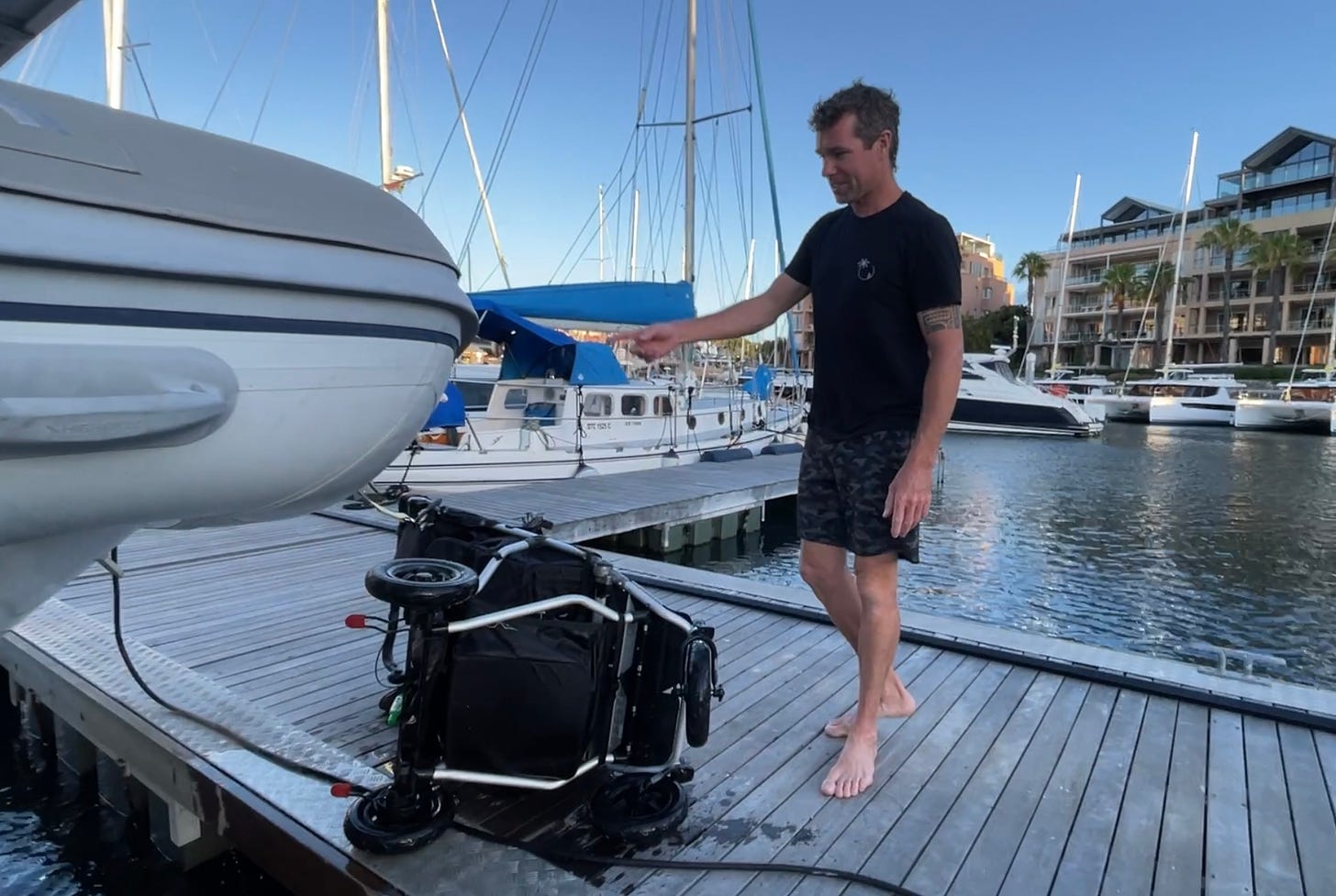
Nahoa 1.0 is shiny, spiffed up and most importantly solid. 90% of the boat work is done (remember 10% of boat work is NEVER done). We are ready to set sail on the 5500nm passage to the Caribbean which should take anywhere from 6-10 weeks. But we’re stuck. It’s late fall here and the low pressure systems are coming over the top of South Africa like bowling balls. One after the other slamming weather windows shut with head winds, large swell and gale force conditions.
Our Naval Architect has been poking fun at us saying it’s like the song Hotel California. “ Welcome to the hotel California… You can check out anytime you like, but you can never leave . ”
We remain positive that our departure is imminent (days not weeks).
We are so ready that we even have a fancy new dish that hangs a little ineloquently off our port quarter. This dish, also known as Starlink, will be a game changer for us allowing us to upload from wherever whenever. Most importantly, with this added addition, we can continue working on our little side project… Nahoa 2.0
A friend and long time follower visited us in Cape Town recently. He asked “How does it feel to have almost finished a circumnavigation?” Our answer? “We feel a bit lost. It feels as though we are floating in space without a tether.” Do we continue sailing? Do we start another lap?
When we set out 8 years ago we thought of this circumnavigation as a sabbatical. A way to see the world before heading back to desk jobs and creating a family. What’s transpired is a bit different from that original dream. Opportunities have sprung up as we’ve kept sailing. YouTube being the biggest one. Life has also happened. We are now a family of four and are looking at the future. We’ll be raising our children aboard. Homeschooling and showing them the enormity of this world from a boat. Now here’s the catch. It won’t be on the current boat.
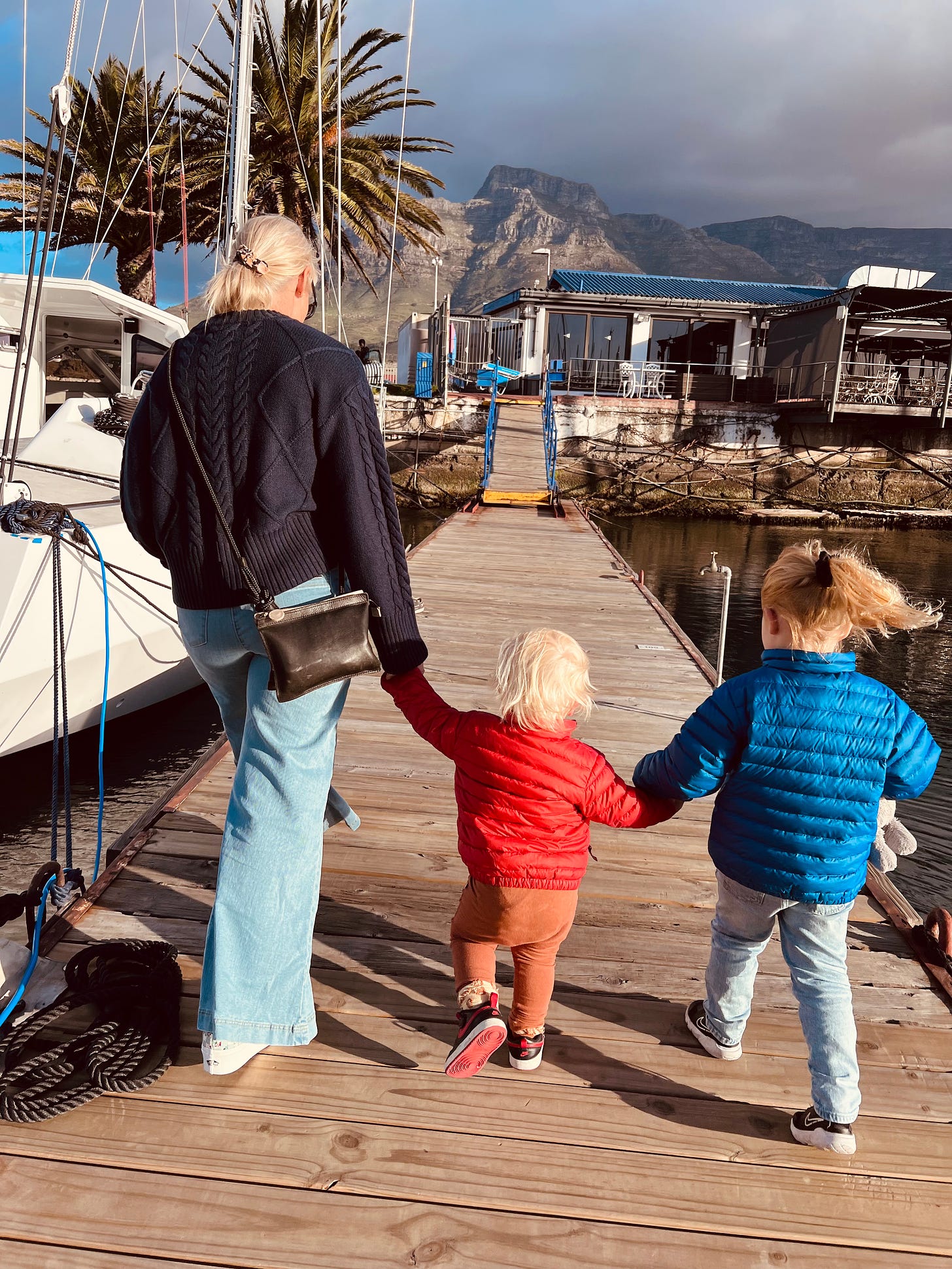
Inception Point
Last August, as we crossed the Indian Ocean, we reached a low and pivotal point in our sailing career. Two days away from making landfall in the Seychelles, we noticed our boat starting to fall apart. The Indian Ocean, from our experience, has been the roughest body of water. Nahoa was loudly protesting as she flexed and groaned in the harsh conditions. What we thought were broken bulkheads turned out to be a rotten bridge deck.
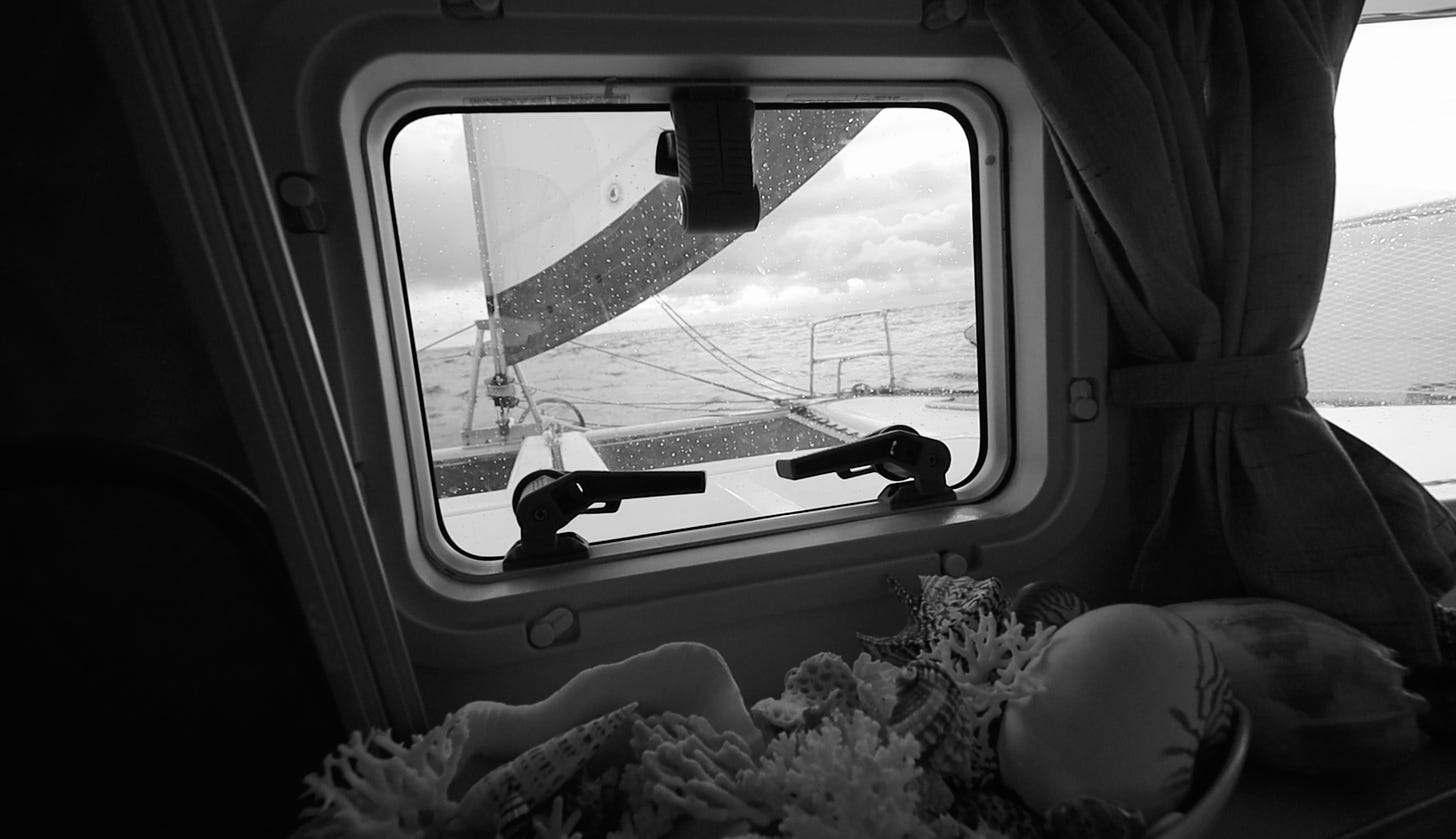
This is where we questioned everything. Absolutely everything. We questioned the assumptions we’d built this whole lifestyle on.
Is this the life we want? Do we want to continue sailing around the world? Do we want our lifestyle to be directly linked to our work and our finances? Is this the boat we want to continue sailing on?
The answer to all of these were a “Yes”. Actually they were a “Hell Yes!” (except one). We decided:
"Yes, let's raise our children aboard and sail around the world again. Let's show them the beauty of this world. Let's lead by example and show them it's possible to live your dream.” But on a different boat. Nahoa 1.0 is just not designed for what we want to do next.
Lots of people have the dream to build their own house. We have a dream to build the ultimate long term sailing machine. A platform to explore the far reaches of the world. A place to educate our children. A cozy, comfortable and most importantly, safe home.
It’s been 8 years of sailing. Mostly near the equator. It’s fantastic. Warm water, sunny skies, gentle trade winds. We yearn to explore more. To go further. Faster.
Doing the same thing over and over again is like reading the same page of a book—it's only a matter of time before you yearn for a new chapter.
We want to experience the Arctic. We want to stretch our legs over to Japan. Back to Asia. Down to Patagonia and around Cape Horn. And then we want to quickly sail back into the tropics and do it all over again.
Ultimately we’re looking for the vessel that is capable to take us anywhere in the world. It’s a tall order but we may have found one…
Introducing the Ultimate Expedition Catamaran
Nahoa 2.0 is brewing behind the scenes. Incubating. It’s a super exciting time for us. We’re somewhat scared. It feels like we’re stepping off the edge of the cliff again. We’re doubling down on this life and YouTube. It’s similar to when we sold all of our possessions before we bought Nahoa 1.0.
By definition, “expedition” implies long distances. It implies remote anchorages. Heavy weather. It’s a whole other level of sailing. It implies preparedness.
When we were home in Canada for the pandemic, a friend said “Dude, you’ve been working on that boat (the current boat) for over 2 years now.” That was 2 years ago. It’s been another solid 2 years of heavy boat work since then. Good friends have a way of pointing out the obvious.
Zero maintenance on boats is impossible but less maintenance is possible if you choose the right hull material. If you design it with simplicity and durability. We’re looking for a vessel that can be banged up, beached, scratched but will last several lifetimes.
This sort of boat does not yet exist yet on the market. Not as a catamaran. Not in the budget we’re looking at.
When something doesn’t exist, it’s an invitation for you to create it.
We will not be buying off a pre-existing production line. We are not slotting into a build queue. We do need to source our own yard and designer.
What’s super exciting is we get to make decisions that very few boat owners get to make. Design decisions that will directly impact our sailing and lifestyle. We will be drawing on the previous 8 years of sailing to make the ultimate expedition catamaran. We will be hull #1.
We have so much more to share. Keep your eyes peeled on our YouTube channel as there may be some news (wink wink). And for those of you who would like to follow more closely in real-time, can follow along on Patreon here .
Honestly it feels pretty awesome. We stand on the precipice of a journey. One that started almost a year ago. Just the anticipation alone breathes life back into our mission.
Stay tuned! Seriously excited over here!
Ben & Ashley
Today we will leave you with this…
Fear is going to show up regardless of what we do in life. The discomfort doesn’t mean something is wrong. Often it’s the opposite. Letting you know more is available. The only way forward is to lean into your courage. The beautiful thing is we all have courage.
Ready for more?

17 Best Catamarans for Sailing Around the World
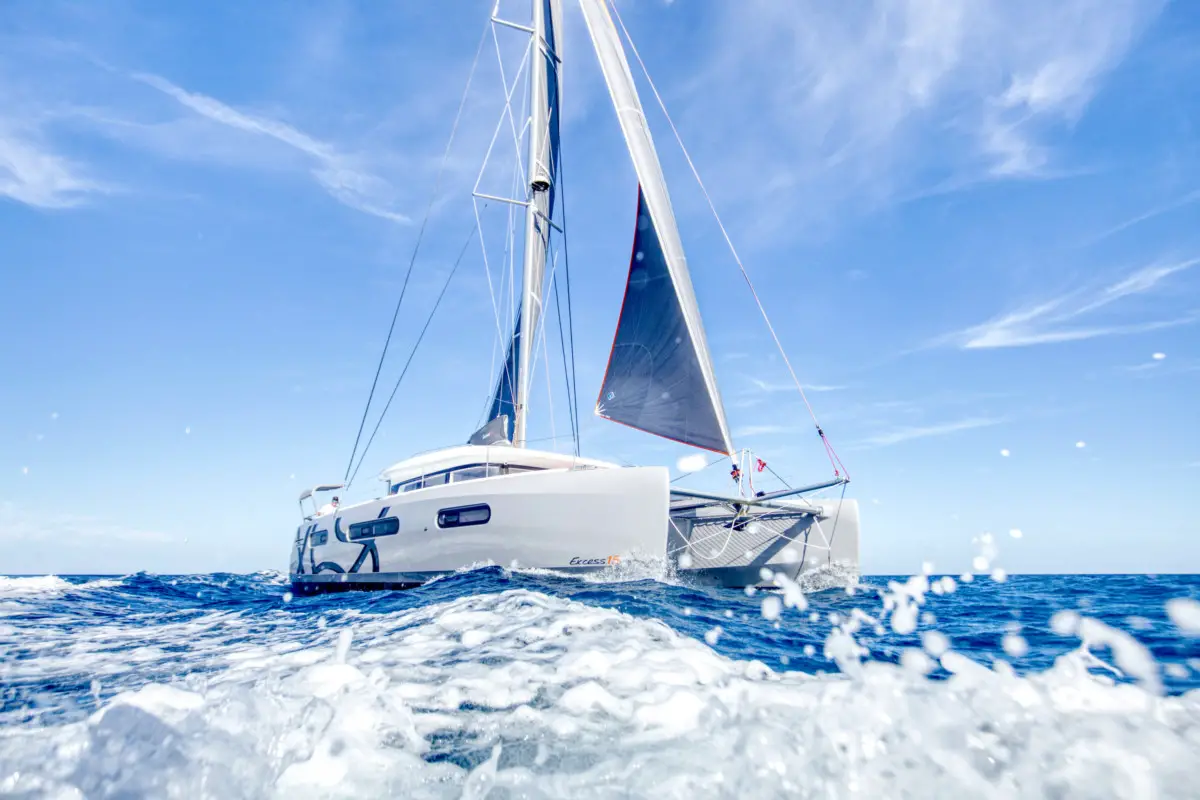
As an Amazon Associate, we earn from qualifying purchases. We may also earn commissions if you purchase products from other retailers after clicking on a link from our site.
Catamarans are quickly outstripping single-hull boats for long-distance journeys. They are more stable and comfortable , and some can travel more than 200 miles in a day. In today’s article, I have put together a complete (well almost) list of some of the best catamarans for circumnavigating the planet; the question is, which one is best for you?
The best catamarans for sailing around the world include:
- The Fountaine Pajot Ipanema 58
These cats focus on speed, safety, and comfort for longer journeys.
This article will show you the seventeen best catamarans for long journeys, and why they’re the best. You’ll also learn some great tips on what to look for in a Catamaran and how to save money by buying a used catamaran. Let this list be a jumping-off point for your future research!
Pro-tip; here are the actual costs of maintaining a cat and here are considerations on how to circumnavigate .
Table of Contents
The Best Catamarans for Sailing Around the World
A catamaran is a double-hulled boat with a deck or cabin area in between (bluewater cat definition in this article ). The double hull design means that the boat rocks less, sits higher on the water, uses less fuel to sail, and can be sailed in shallower waters than a single-hulled boat without worrying about grounding.
Catamarans come in a variety of sizes and can be sail-powered or motor-powered and range from single-person sailing boats to family-sized yachts. Every catamaran design is different, and the twin-hull shape offers many ways to customize the layout of a ship.
Each boat on this list is a larger catamaran (+40ft, more on size here ), so if you’re going to sail around the world, you want lots of space for provisions and rest.
Of course, there are tons of technical specs for each of these boats, but I’m going to focus on the overall features of each of these catamarans, what makes them stand out, and why they would each be an excellent choice for a transatlantic journey.
Antares 44i
The Antares 44i is an excellent option for sailing around the world and was explicitly designed for long-distance cruising. It performs well in any weather conditions, can be sailed easily by two people, and you’ll be able to sail long distances and live in comfort.
Although it can be easily sailed by a crew of two I believe that a true bluewater cat should be set up for single-handed sailing, more on that in another article .
This catamaran features a stateroom on each hull and a forward cabin with plenty of storage space. The living and entertainment features include a flatscreen tv and a high-end deck speaker system.
With this model, Antares dedicates itself to high-quality boats with optimal rigging and engine configurations.
Atlantic 42
Atlantic is no longer building this catamaran, but there are usually a few pre-owned boats on the market. You can also get it made custom if you love the design, but be prepared to spend more money on a custom boat (custom boat also gets custom problems ;)).
The Atlantic 42 is slightly smaller than some of the other catamarans on this list but is a seaworthy vessel. 42 ft is what most sailors I interview ( in this article ) said was the smallest cat to safely cross big oceans. It is also a decent size to counter the risk of capsizing (more on that here ).
It has a forward cockpit and pilothouse, which gives the owner a better use of space and makes the boat easier to navigate. With single-handed capability, one person can sail it easily and let the rest of the crew relax.
One of the best-praised aspects of the Atlantic 42 is its galley, more extensive than most 42-footers (12.8-meter) can offer.
One of the few 50 footers (15.24 meters) that can be sailed by just one person (many would of course disagree on this).
The Catana 50 is a catamaran worthy of an overseas journey. Its size adds to its stability on the open waters and its ability to sail straight through the choppy ocean and windy conditions.
The Catana is also incredibly spacious on the inside, with substantial cabins and showers. The biggest downside to the Catana 50 is its price, as it’s much more expensive than most of its competitors.
Catana also holds up well against some of the fastest cruising cats out there, here’s a list of the fastest cruisers if you are interested in that.
However, if you can find a gently-used Catana 50, you can rest assured that this boat will last!
The Dolphin 42 is unique because of the use of daggerboards instead of fixed keels. This upgrade means that the boat has some pretty decent upwind performance while at the same time being faster downwind.
Centerboards and daggerboards offer some interesting downsides compared to mini keels. This is an interesting discussion and I suggest you read another one of my articles if you want to deepen your knowledge a little.
These catamarans are some of the lightest on the market. Not many Dolphins were made, so they are relatively hard to find. However, if you want a small, lightweight boat capable of going great distances, the Dolphin 42 is an excellent choice.
Fountaine Pajot Belize 43
The Fountaine Pajot Belize is another well-built cruising yacht. Its core is made of foam instead of balsa, which reduces the risk of structural damage due to a rotten core in case of water intrusion.
The design of Belize offers many options for customizability, with large open spaces and a combined saloon, navigation, and dinette area.
There are two styles of Belize catamarans for sleeping quarters. You can either purchase a boat with an entire primary suite on one hull or one with two cabins in each hull. The first option is great if you are sailing the world alone and not expecting many guests, as it increases the storage capacity.
Understanding what factors to consider when getting a cat can be hard, there are just so many of them (such as the daggerboard discussion above), I have tried to compile some of the most important in this article .
The boat also has wraparound windows to increase the sense of space in the galley.
Fountaine Pajot Lucia 40
Fountaine Pajot is one of the best sailboat manufacturers existing today, as their boats are well made and highly versatile. The Lucia 40 is no exception – it’s a smaller boat but has a lot of room for moving around and on-board living.
The living area is remarkably spacious on this catamaran for its size.
The galley and lounge easily accommodate 6+people. The Lucia 40 doesn’t disappoint when it comes to sailing either, as the narrow hulls slice through choppy waters with ease.
Most catamarans today are built to withstand rough weather but that doesn’t matter as much if the crew isn’t up for the task, I firmly believe that the most important thing a boat should consist of, is knowledge. Therefore taking online courses ( two free here ) or reading books ( my favorites here ) is imperative.
Gemini 105M
Gemini’s boats have been on the market for years and are solidly built for cruising. This boat is one of the most popular ever made, I personally would consider something different for offshore cruising, but since it has such a good reputation, I felt I had to add it to the list.
If you want to understand why I am hesitant to take this boat around the world, I recommend you read my article: What are trampolines on a catamaran?
The Gunboat 62 is a great catamaran and set the standards for the rest of the impressive Gunboat lineup. It’s sleek and spacious while being robust and capable of transatlantic journeys. You can easily travel the world in a Gunboat 62 with several people and not feel cramped.
The yacht was made for speed and power and remains one of the fastest catamarans on the market, even rivaling the newer Gunboat models. GABO
Although the earlier models of the Gunboat 62 weren’t designed for a lot of cargo, you can still find space for everything you need without compromise.
Lagoon catamarans are known for their reliability and ease of use. If you are considering a catamaran for the first time and are unsure about the technicalities of sailing, a Lagoon boat is a great option.
The Lagoon 380 is probably the smallest cruiser on this list, which makes it better suited for solo or couple sailing.
When I go looking to buy something, whether it be a boat, campervan, or whatever, I create a checklist and classify all the things I want either by NEED or NICE to have.
I believe the Lagoon 380 to be sub-optimal for my NEEDS, even though it does check a lot of NICE boxes, there’s a step-by-step article on the NEED and NICE method here .
There are several cabin options available on the Lagoon 380, but if you’re sailing by yourself, you can settle for three cabins and a larger galley and living space. With a smaller cockpit and broader side decks, the Lagoon 380 packs a lot of practicality and ease of sailing into a more compact catamaran.
If you like the idea of a Lagoon boat but want a little more space, the Lagoon 42 is the upgraded version of the Lagoon 380. With all of the same benefits, it comes with more space for cabins or storage, making it one of the best-selling Lagoons of all time.
The Lagoon 42 is also a faster cruiser built for strength. While it’s not the fastest on the market, it works well in choppy waters and windy conditions, making it great for the beginning sailor to go on a more extended trip.
Many people have completed an around-the-world sail with this ship.
Although there is a flybridge version, I would recommend the “open” version due to several factors, some including increased windage and a higher boom. More on flybridges pros and cons here .
For stability, safety, and durability, you can’t beat the Lagoon 42.
The Leopard 45 performs better with less storage weight because of the relatively low bridge deck clearance. If the boat is fully loaded, you could experience some wave pounding. However, the cockpit is open and airy, with devices that block the sun and provide maximum comfort while sailing.
The Leopard 45 is an incredibly beautiful boat, and has a strong reputation for excellent build quality!
Leopard catamarans are one of my personal favorites, as such I have written an entire article about the brand, so if you want to understand its pros and cons then here is the link . Gabo
Designed in South Africa, it features a high rear arch for extra support and very smoothly connected decks. The galley is large and open, and most Leopards offer a four-cabin plan. If you are traveling with another person, this boat is an excellent option for you!
The Manta 42 is another classic catamaran that you can buy used (at a decent price), as it is an incredibly seaworthy vessel. While still in production, the Manta was one of the most popular catamarans on the market.
It is still in high demand amongst circumnavigators. Buying a used Manta 42 usually means that you inherit some of the previous owner’s boat upgrades!
The Manta 42 also made it to my list of the 9 safest catamarans on the market ( link ).
This blue water cat can be sailed by one or two people, making it ideal for liveaboard couples or long-distance shorthanded sailing. The galley is in the saloon ( instead of in one of the hulls ), making the cabins below more spacious and better equipped.
Overall, the Manta is well equipped for sailing around the world.
Nautitech 44
Nautitech is an excellent brand of the catamaran, with several different designs per boat. The Nautitech 44 has a unique feature, you can have it with two options for steering: twin wheels or a single wheel.
The Nautitech 44 also features a cockpit on the same level as the saloon. The door between the two is more convenient than a hatch and dramatically reduces the risk of water damage during rain pour.
This is also the same boat that aeroyacht president Gregor owns, he has offered some great insights into Nautitech in the book Catamarans (amazon link )
Outremer 45
Outremer is famous for being one of the fastest brands of catamarans on the market. If you need speed, the Outremer 45 might be the perfect choice for you. It has a top speed of 16 knots, which is higher than almost every other catamaran of its class.
While the Outremer 45 is known for speed, it doesn’t compromise on the quality of living.
You can settle into life on this boat with complete peace of mind. Even as a beginning sailor, the steering is simple and easy to use, and the autopilot is top of the line, so you’ll be able to sail across the ocean in an Outremer without issue.
Privilege Serie 5
A French-designed catamaran, the Privilege Serie 5 is one of the most comfortable 50-foot (15 m) yachts available. The unique cabin layout includes the master cabin in the boat’s center instead of in one of the hulls.
The Privilege Serie 5 is also incredibly easy to sail, despite its larger size.
The sails and controls lead to the helm, where the raised deck makes it easy to see all around the deck. If you want to cross the ocean with a full crew then the Privilege Serie 5 might be perfect for you!
Seawind 1000
The Seawind 1000 is the smallest boat on this list, measuring 33 feet (10 meters) long altogether. However, this doesn’t mean that it’s not livable. If you are sailing on your own or with a partner, there is more than enough space to live in the Seawind 1000, which includes the option of a centered cabin or two hull cabins.
Because it’s small, the Seawind 1000 is easy to handle. The mast and sails are all manufactured for extra stability and ease of use.
Overall, the Seawind 1000 is an excellent example of a simple, safe, and seaworthy catamaran.
Note: since this is a small catamaran it will also be more sensitive to heavy weather so trip-planning becomes even more important.
The Voyage 44 is one of the oldest cats on this list, having had its hay-day in the mid-1990s. However, this also means that a used Voyage 44 will be cheaper than a newer boat. If you can find a Voyage with previous responsible owners, you will inherit any upgrades and fixes that they’ve made on top of a very seaworthy boat.
The Voyage 44 has more storage and space than most cruisers of its size and is known for behaving very well in choppy waters.
This catamaran does its job well while providing adequate space for cooking, sleeping, and living aboard.
What To Look For in a Long-Distance Cruising Catamaran
If you are planning to sail around the world, you need to be very careful about which kind of catamaran you decide to use. Many of the things you want in a boat really comes down to personal preference, so be sure you know what design preferences you want before you start shopping!
Size and Payload
The most important thing to consider when buying a catamaran is how much space and cargo you need because the larger the boats are, the bigger the payload it can handle. Decide how long you want the ship to be and how much you’re taking with you.
It’s vital not to overload a catamaran, this will reduce performance and increase risk of unwanted behavior in heavy seas.
Cabin Placement
Most catamarans have options for a “Maestro” cabin placement, where one entire hull is the master suite, and the other cabins are located on the opposite hull.
Cockpit and Protection From The Weather
Is the cockpit on the boat you’re looking at covered or open? This can make a difference on the high seas, especially during rainy weather.
The size of the ship also can affect how many people you need as a crew. If you’re traveling by yourself or with one other person, you don’t want to buy a boat that needs a larger crew.
Buying Used?
If you don’t want to spend the money on a brand new catamaran, I don’t blame you. Several of the ships on this list are out of production and can only be found used. However, for circumnavigation, you do want a boat of high quality to keep you safe and dry until you make it to your destination.
When buying a suitably used catamaran, it’s essential to look at the refit history of the boat more than the year it was made. Catamarans are sturdy, and the general design has been the same for at least the past decade.
If you find a newer, larger, cheaper boat, you should look into its history.
Your best bet to save money while buying a catamaran will be to buy an older, probably smaller boat with an excellent refit history and no serious issues. It will still be an investment, and a sturdy used catamaran will serve you well.
Final Thoughts
No matter which catamaran you decide to buy for your journey, you’ll be able to sail safely and comfortably. Catamarans are great yachts for long-distance sailing, and the ships on this list are the best of the best. These brands are time-tested and ready to accompany you on an adventure around the world!
Here are Some of My Favorite Catamaran Cruising Resources
Thank you for reading this article. I hope you found it helpful as you hopefully start your sailing adventures. Here are some resources that I use as a sailor that I hope you’ll also find helpful. These are affiliate links, so if you do decide to use any of them, I’ll earn a commission. But in all honesty, these are the exact things that I use and recommend to everyone, even my own family. Sailboats: If you’re looking for the best boat to suit your needs, I would recommend a catamaran. If you’re interested, I can show you the differences between catamarans and other types of sailboats .
Books: For getting started, I really like Cruising catamarans made easy . It is actually a textbook from the American sailing association; it is used to get a cruising catamaran certification. There are some other great books, and I have compiled a list of books about cruising catamarans that you will find useful.
Communication: Being out on adventures, whether it be sailing or climbing mountains, good communications are essential to being safe. I recommend two things Google fi (incredibly simple cellular data all over the world) and Garmin inreach mini (for text and voice in remote areas without cell coverage)
Sailing courses: Online sailing courses are great for beginners starting out their sailing career; it’s an efficient way of learning the basics of navigation, throttle controls, and maritime safety. I suggest starting with two free courses from NauticEd .
To see all my most up-to-date recommendations, check out this resource that I made for you!
- Wikipedia: Catamaran
- Cruising World: A-Z Best Cruising Catamarans
- Dreamy Yacht Sales: Four Best Catamarans for New Buyers
- Atlantic Cruising: Good Cat/Bad Cat
- Yachting World: Catamaran Sailing Across the Atlantic
- Boat Affair: What is a Catamaran?
- Nautilus Sailing: Catamaran Sailing
Owner of CatamaranFreedom.com. A minimalist that has lived in a caravan in Sweden, 35ft Monohull in the Bahamas, and right now in his self-built Van. He just started the next adventure, to circumnavigate the world on a Catamaran!
3 thoughts on “ 17 Best Catamarans for Sailing Around the World ”
I like the efforts you have put in this, regards for all the great content.
Thanks Elisabeth I really appreciate the kind words 🙂
I appreciate you sharing this blog post. Thanks Again. Cool.
Leave a Reply Cancel reply
Your email address will not be published. Required fields are marked *
Save my name and email in this browser for the next time I comment.
Recent Posts
Must-Have Boat Gear for Catamaran Sailors!
Sailing is probably the most gear-intensive activity I've ever done; there are so many decisions to be made about what gear to buy now, for tomorrow, and what to definitely never buy. The gear on...
6 Best Trailerable Trimarans For Bluewater and Coastal Sailing
Having a boat costs a lot of money, even when you are not using it, marina fees, etc. And once it is in the water most sailors never go very far from their "home marina" and sailing will be somewhat...

Be Bold. Be Antifragile.

Don't miss another video, subscribe to our channel
Alubat [al.u.bat] noun | Aluminium Bateau | Aluminum Boat

Open House at Alubat
Join us at the Alubat boatyard in Les Sables d’Olonne, France for our Open House this coming May 31 to June 1 and get on board a new OVNI 370 and OVNI 430.

Amazing 43-ft Aluminum Sailboat
Full-time cruisers Roberta and Duca stopped by to visit us during the La Rochelle Boat Show for a tour of the NEW Ovni 430.

The ‘Small’ Huge Sailboat
Tour of the new Ovni 370 with Duca and Roberta on their YouTube channel Odd Life Crafting.

Aluminum Sailboat Misconceptions
“I have a friend, who knows a guy, who has a cousin, that bought an aluminum boat, and after a week in the marina the bottom fell out of her”.

Alubat Pricing
How Much Does a Well-Equipped Alubat Ovni Cost? Find out how we price the Ovni range of aluminum sailboats for the serious off-shore cruiser.

OVNI 490 Preview
The 490 shares some of the hallmarks of the Ovni range: shaft drive, full sailplan, centerboard, and spacious interior with a raised salon layout.

50 years of sailing excellence!
FIGARO nautisme | by François Tregouet
Half a century old and still thriving, Alubat, the Vendée-based shipyard, is not content with just being one of the world’s benchmarks in ocean cruising with its iconic Ovni yachts. Instead, with the enthusiasm of youth, it is preparing to launch three new monohulls over the next two years.
Link to read article [PDF]
STRENGTH ACROSS THE FULL RANGE OF ALUBAT Aluminum SAILBOATS

The new generation OVNI 370 with an inverted bow for improved performance and expanded the interior volume.

The new generation OVNI 430 with an inverted bow for improved performance and expanded the interior volume.

What sets the OVNI 490 apart are the protected pilot house and twin engines.

The OVNI 450 stands out from the OVNI range and maintains a traditional cabin top styling.
Designing and building aluminum boats for blue water sailing.
The Alubat shipyard has been designing and building aluminum boats for blue water sailing since 1973. With more than 1,600 yachts built and with 50 years of expertise in metal work and carpentry, Alubat has unparalleled experience in the aluminum sailboat market.
Discover More

Aluminum is green
By having the ability to beach your boat, inspecting and servicing your yacht becomes less daunting than having to haul out.
beach your boat

Go places where other sailboats can't.
Centerboard advantages, navigate shallow water.
From the turquoise waters of the Bahamas to the Alaskan ice fields, a lifting keel gives you the peace of mind to navigate in shallow water.
The centerboard doesn’t sacrifice performance or safety, in fact, it can enhance performance when it comes to downwind sailing.

Another advantage of a centerboard is the expanded possibilities to find docking in marinas that would otherwise be too shallow for a fixed keel sailboat.
Without the limitations of fixed keel boats, your cruising opportunities can take you through the maze of Europe’s ancient canals and the historic North American waterways.
The centerboard can be lifted manually or by using a hydraulic system.

traverse canals
Owners sharing experiences from around the world.
CIGALE 15 QR
ALUBAT AMERICA
ALUBAT SHIPYARD
TRAVEL BOOKS
@ 2024 Alubat America. All rights reserved.

The global authority in superyachting
- NEWSLETTERS
- Yachts Home
- The Superyacht Directory
- Yacht Reports
- Brokerage News
- The largest yachts in the world
- The Register
- Yacht Advice
- Yacht Design
- 12m to 24m yachts
- Monaco Yacht Show
- Builder Directory
- Designer Directory
- Interior Design Directory
- Naval Architect Directory
- Yachts for sale home
- Motor yachts
- Sailing yachts
- Explorer yachts
- Classic yachts
- Sale Broker Directory
- Charter Home
- Yachts for Charter
- Charter Destinations
- Charter Broker Directory
- Destinations Home
- Mediterranean
- South Pacific
- Rest of the World
- Boat Life Home
- Owners' Experiences
- Interiors Suppliers
- Owners' Club
- Captains' Club
- BOAT Showcase
- Boat Presents
- Events Home
- World Superyacht Awards
- Superyacht Design Festival
- Design and Innovation Awards
- Young Designer of the Year Award
- Artistry and Craft Awards
- Explorer Yachts Summit
- Ocean Talks
- The Ocean Awards
- BOAT Connect
- Between the bays
- Golf Invitational
- Boat Pro Home
- Pricing Plan
- Superyacht Insight
- Product Features
- Premium Content
- Testimonials
- Global Order Book
- Tenders & Equipment
Explorer Yachts For Sale
Adventurous yacht owners eventually tire of the popular Mediterranean and Caribbean cruising grounds and start looking for more challenging cruising areas. This explains the growing popularity of long-range expedition yachts with vast storage capacity for food, fuel and water, enabling them to roam the world’s oceans for weeks at a time. Here we present examples of world-girdling explorer yachts currently for sale.
Yacht Features
Propulsion System

Used Expedition Yachts for Sale
Expedition or Explorer yachts are self-sustaining vessels that are built for long range cruising in the most remote regions of the world. They feature a robust hull, large crew capacity, long cruising range, and vary in their level of comfort and luxury. These types of vessels are growing in popularity as a great number of owners are seeking more remote locales. SYS Yacht Sales offers a wide range of used expedition yachts for sale worldwide. Don't see the vessel you're looking for here? Contact our experienced yacht brokers for assistance, we look forward to helping you find the yacht that's right for you.
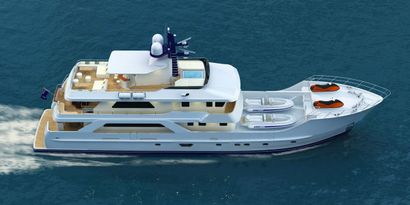
Inace Yachts Explorer
Numarine 37XP
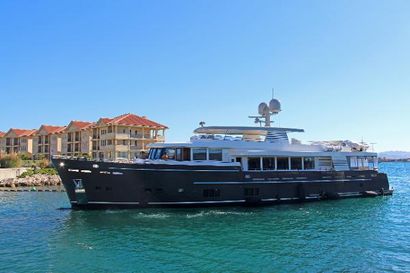
Van der Valk Explorer 37M

Inace Yachts Overing
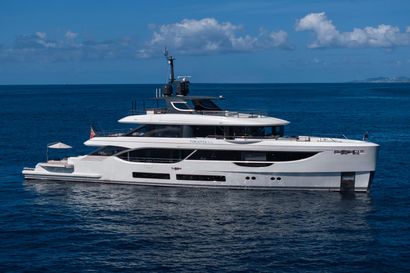
Benetti 34M OASIS
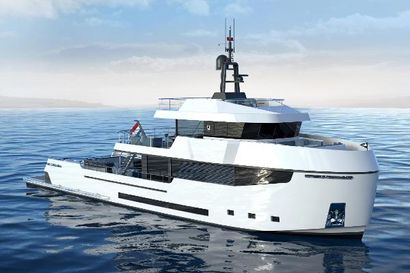
Lynx Adventure 32
Adventure 32 #1.
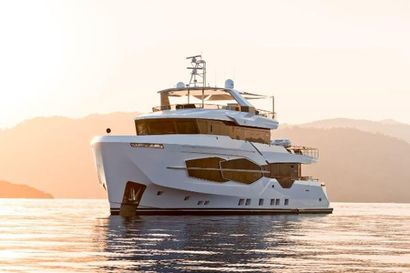
Numarine 32XP
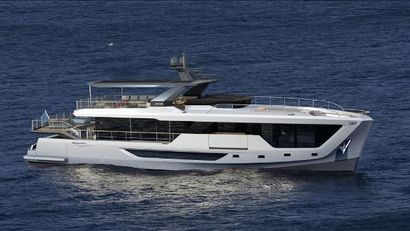
Numarine 30XP
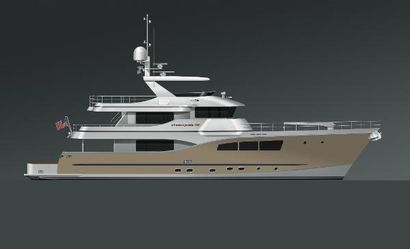
All Ocean Yachts Tri-Deck Explorer Yacht
All ocean yachts 100' steel or fiberglass.
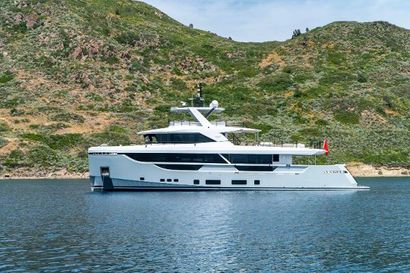
Blaundus V30
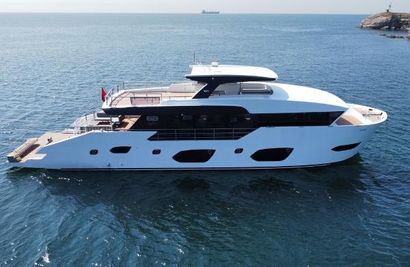
Carboyacht 90
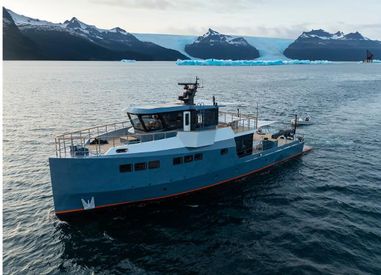
Explorer LOYD 27 Yacht Support
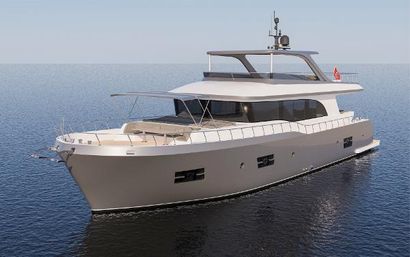
Custom 27m Trawler
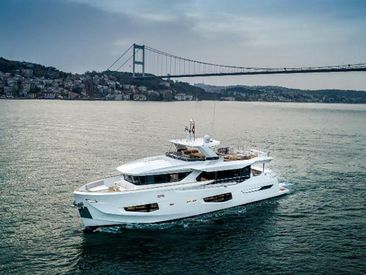
Numarine 26XP
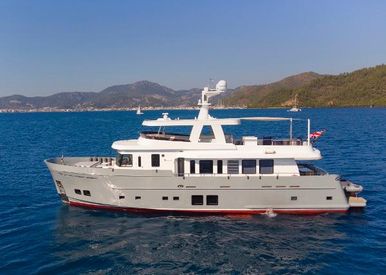
Mural Yachts 85 Semi Displacement Trawler
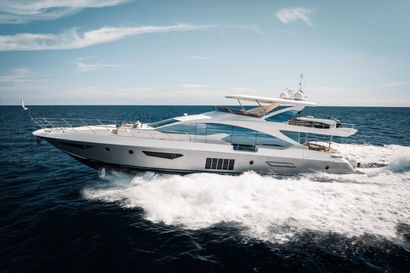
Azimut 80 Flybridge
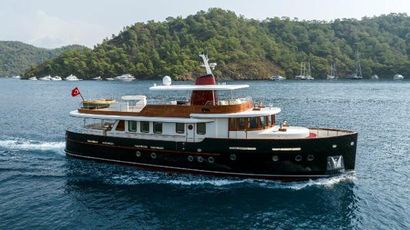
Custom Classical
Magnolia one.
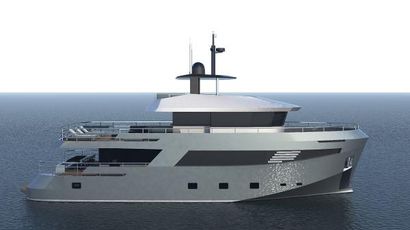
Soyaslan Custom
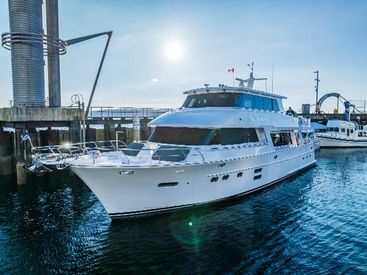
Hampton Endurance 750 LRC
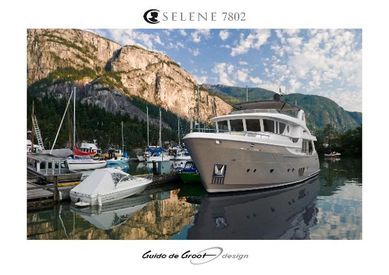
Selene 78 Ocean Explorer

Selene 72 Ocean Explorer

Outer Reef Yachts 720 DBMY
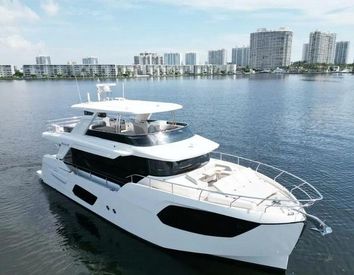
Absolute Navetta 68
- Event Details

The Ultimate Guide to Choosing Between a Sailboat or Catamaran for Your Sailing Adventures
C hoosing between a sailboat and a catamaran for your sailing adventures is a significant decision that depends on various factors, including your sailing preferences, experience level, budget, and intended use. Here's an ultimate guide to help you make an informed decision:
1. Sailing Experience:
- Sailboats: Typically require more skill and experience to handle, especially in adverse weather conditions. Ideal for sailors who enjoy the traditional feel of sailing and are willing to invest time in learning and mastering the art.
- Catamarans: Easier to handle, making them suitable for beginners. The dual-hull design provides stability, reducing the learning curve for those new to sailing.
2. Space and Comfort:
- Sailboats: Generally have a narrower beam and less living space. However, some sailboats may offer comfortable cabins and amenities.
- Catamarans: Wider beam creates more living space. Catamarans often have multiple cabins, spacious saloons, and expansive deck areas, providing a more comfortable living experience.
3. Stability:
- Sailboats: Monohulls can heel (lean) while sailing, which some sailors enjoy for the thrill but can be discomforting for others.
- Catamarans: Greater stability due to the dual hulls, providing a more level sailing experience. Reduced heeling makes catamarans suitable for those prone to seasickness.
4. Performance:
- Sailboats: Known for their upwind performance and ability to sail close to the wind. Some sailors appreciate the challenge of optimizing sail trim for efficiency.
- Catamarans: Faster on a reach and downwind due to their wide beam. However, they may not point as high into the wind as monohulls.
- Sailboats: Typically have a deeper draft, limiting access to shallow anchorages and requiring deeper marina berths.
- Catamarans: Shallow draft allows access to shallower waters and secluded anchorages, providing more flexibility in cruising destinations.
- Sailboats: Generally more affordable upfront, with a wide range of options available to fit different budgets.
- Catamarans: Often more expensive upfront due to their size and design. However, maintenance costs may be comparable or even lower in some cases.
7. Mooring and Docking:
- Sailboats: Easier to find slips and moorings in marinas designed for monohulls.
- Catamarans: Require wider slips and may have limited availability in certain marinas, especially in crowded anchorages.
8. Intended Use:
- Sailboats: Ideal for traditional sailors who enjoy the art of sailing, racing enthusiasts, or those on a tighter budget.
- Catamarans: Suited for those prioritizing comfort, stability, and spacious living areas, especially for long-term cruising and chartering.
9. Resale Value:
- Sailboats: Generally have a more established resale market, with a wider range of buyers.
- Catamarans: Growing in popularity, and well-maintained catamarans often retain their value.
10. Personal Preference:
- Consider your personal preferences, the type of sailing you plan to do, and the kind of lifestyle you want aboard your vessel.
In conclusion, both sailboats and catamarans have their advantages and disadvantages. Your decision should be based on your individual preferences, experience level, budget, and intended use. If possible, charter both types of vessels to experience firsthand how they handle and to help make a more informed decision based on your own preferences and needs.
The post The Ultimate Guide to Choosing Between a Sailboat or Catamaran for Your Sailing Adventures appeared first on Things That Make People Go Aww .

or with email
- Quintana Roo >
- Puerto Aventuras >
Luxury Sunset Catamaran Sailing
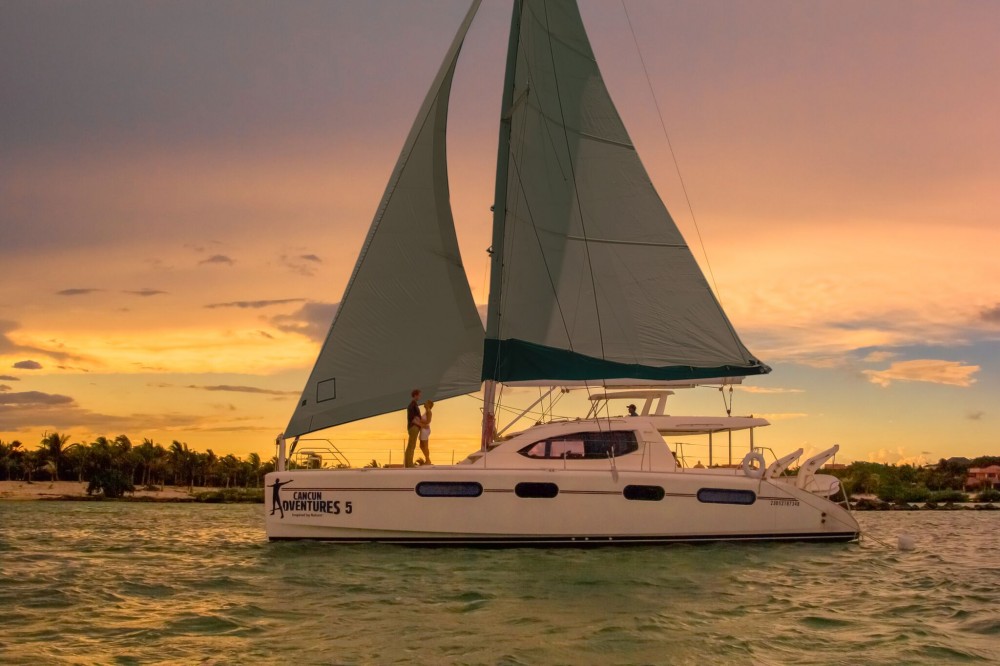
Why People Love It
Description
Complimentary Options
Meeting Location
Requirements
About the operator, tours you may like, other activities around puerto aventuras, mexico.
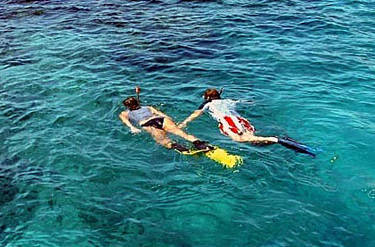
Dolphin Watching
Manatee Safari
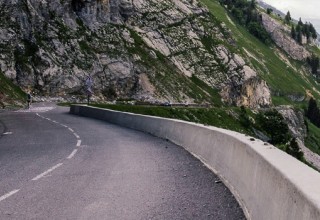
Transportation
Generating PDF...

Select Account Type
Sign-up with
Almost there!
Find booking.
How should we contact you?
Thank you! We'll get back to you as soon as possible!
Click here to register and track your question!
If you would like to follow up with us:
+1 (855) 782-3006
Forgot your password?
Enter your email address below and we'll send you a reset link:

IMAGES
VIDEO
COMMENTS
After sailing around the world for the past 8 years we sat down and envisioned a vessel that epitomizes low maintenance, robustness, and superior performance with the ability to explore all corners of the world. The Nahoa 55 is a complete re-think of what embodies an expedition catamaran.
Draught: 1.50m 4ft 11in. Light displacement: 18,900kg 41,260lb. Fuel capacity: 1,100lt 242gal. Water capacity: 660lt 145gal. Design: Pierre Delion/www.garciayachts.com. The new go-anywhere Garcia ...
Photo: Leopard Catamarans. Displacement: 14.5 tons Beam: 24ft 2in Draft: 4ft 11in Features: Forward-facing cockpit, 3 or 4 cabins, 8 to 12 berths, up to 4 heads, up to 5 showers, 2 45hp engines, 780L water capacity, 700L fuel capacity. The big unique selling point of this best catamaran for sailing around the world is the forward-facing cockpit - a shaded and well-ventilated area to relax ...
Exploration 45 The Exploration 45 is an aluminium centreboarder capable of taking on any adventure, from polar exploration to tropical sailing. She was voted 'Best Boat' and 'Boat of the Year' in 2015. Leaflet Request information Wallpapers The number one
A whole new chapter is about to begin for Sailing Nahoa! This Expedition Catamaran is going to be one hell of a machine designed for cruising the worlds ocea...
Best catamaran and multihull winner 2024 - Outremer 52 My highlight test of 2023? Sailing this Outremer 52 for 200 miles over two days and nights! Quite how such a large vessel, one that is ...
Model February 06, 2024. Pioneering expedition yachts for over 15 years, Bering Yachts is once again charting new waters with the introduction of B60 CAT, an aluminum catamaran designed for both luxurious exploration and comfortable living. Following the success of their renowned steel trawler yachts, Bering takes a bold step into the world of ...
An Aluminum Expedition Catamaran. With 110′ LOA, a 35′ beam, and 45′ (33.5m, 10.6m, and 13.7m) of bridge clearance, the H-2 catamaran seeks to make a case for U.S. custom boatbuilding. Hauling toys beyond the horizon is the raison d'être for a rugged go-anywhere catamaran designed and built in the U.S., a notable exception in the world ...
In this video we tour 2021 Multihull Of the Year Winner, the Explocat 52 cruising catamaran by Garcia Yachts. It's a catamaran designed for blue water cruisi...
Have the design and layout developed together with CATAMARIS ® and its architects and have them built at one of the experienced Catamaris ® shipyards in Holland, Germany and Europe. Best seaworthy custom-made aluminium Explorer sailing and motor catamaran yachts for worldwide expeditions, made in Holland. Discover here.
Our amazing 48 foot sailing catamarans. Voyages are conducted aboard the award-winning Leopard 4600 catamarans. These elegantly designed and precision built vessels incorporate safety features, large deck space, a roomy cockpit, light and ergonomic galley, and an enormous transom (for easy entry and exit from the water while wearing SCUBA gear), with an advanced sail plan that makes them fast ...
Lagoon 380. The long-time best-seller from the world leader in catamarans, with more than 1,000 produced over almost 20 years from 1999. With its characteristic vertical windows, the 380 and its ...
With 1,000 gallons of fuel, the Archipelago 47 has a reported range of 2,400 nautical miles at 8 knots, 1,400 nm at 10 knots, or 700 nm at 18 knots. It's also rated CE Class A for extended ocean voyages. Archipelago offers multiple engine configurations, as well.
Aluminum catamaran Garcia Explocat 52. Inspired by the success of the 48-foot catamaran and the Exploration series of monohull yachts, Garcia shipyard launches the Explocat expedition motor sailing catamaran. The body, which is lighter and stiffer than fiberglass, will provide excellent speed and safety.
Nordhavn is the world's most celebrated expedition trawler yachts for adventure boaters of all levels. With models ranging from 41 to 120 feet, there is a Nordhavn perfectly suited to you, no matter what your experience or ambition. Nordhavn trawler yachts provide the safety and comfort necessary for expeditions to the highest latitudes of ...
Design decisions that will directly impact our sailing and lifestyle. We will be drawing on the previous 8 years of sailing to make the ultimate expedition catamaran. We will be hull #1. We have so much more to share. Keep your eyes peeled on our YouTube channel as there may be some news (wink wink).
The best catamarans for sailing around the world include: Lagoon 42. The Fountaine Pajot Ipanema 58. Manta 42. Catana 50. Dolphin 42. Gunboat 62. These cats focus on speed, safety, and comfort for longer journeys. This article will show you the seventeen best catamarans for long journeys, and why they're the best.
Designing and building aluminum boats for blue water sailing. The Alubat shipyard has been designing and building aluminum boats for blue water sailing since 1973. With more than 1,600 yachts built and with 50 years of expertise in metal work and carpentry, Alubat has unparalleled experience in the aluminum sailboat market.
We are sailing east across the North Atlantic Ocean. Hit subscribe and follow along!Want to support the channel?https://www.patreon.com/expeditionevanshttps:...
What Expedition model is the best? Some of the best-known Expedition models presently listed include: 43M Long Range MotorYacht, FAVARO Explorer 76, Long Range Yacht and Vessel. Specialized yacht brokers, dealers, and brokerages on YachtWorld have a diverse selection of Expedition models for sale, with listings spanning from 1960 year models to ...
Explorer Yachts For Sale. Adventurous yacht owners eventually tire of the popular Mediterranean and Caribbean cruising grounds and start looking for more challenging cruising areas. This explains the growing popularity of long-range expedition yachts with vast storage capacity for food, fuel and water, enabling them to roam the world's oceans ...
They feature a robust hull, large crew capacity, long cruising range, and vary in their level of comfort and luxury. These types of vessels are growing in popularity as a great number of owners are seeking more remote locales. SYS Yacht Sales offers a wide range of used expedition yachts for sale worldwide.
3. Stability: Sailboats: Monohulls can heel (lean) while sailing, which some sailors enjoy for the thrill but can be discomforting for others. Catamarans: Greater stability due to the dual hulls ...
Itinerary. 17:30 Depart Puerto Aventuras for Inah reef. 17:45 Sailing and open bar service. 19:00 -- Snack on board at protected inlet 19:45 -- Arrive to Puerto Aventuras and board transport back to hotel. Meeting Location. Pickup available in Riviera Maya, Cancun. From Cancun the departure is from V&V Marina and from Riviera Maya the departure ...